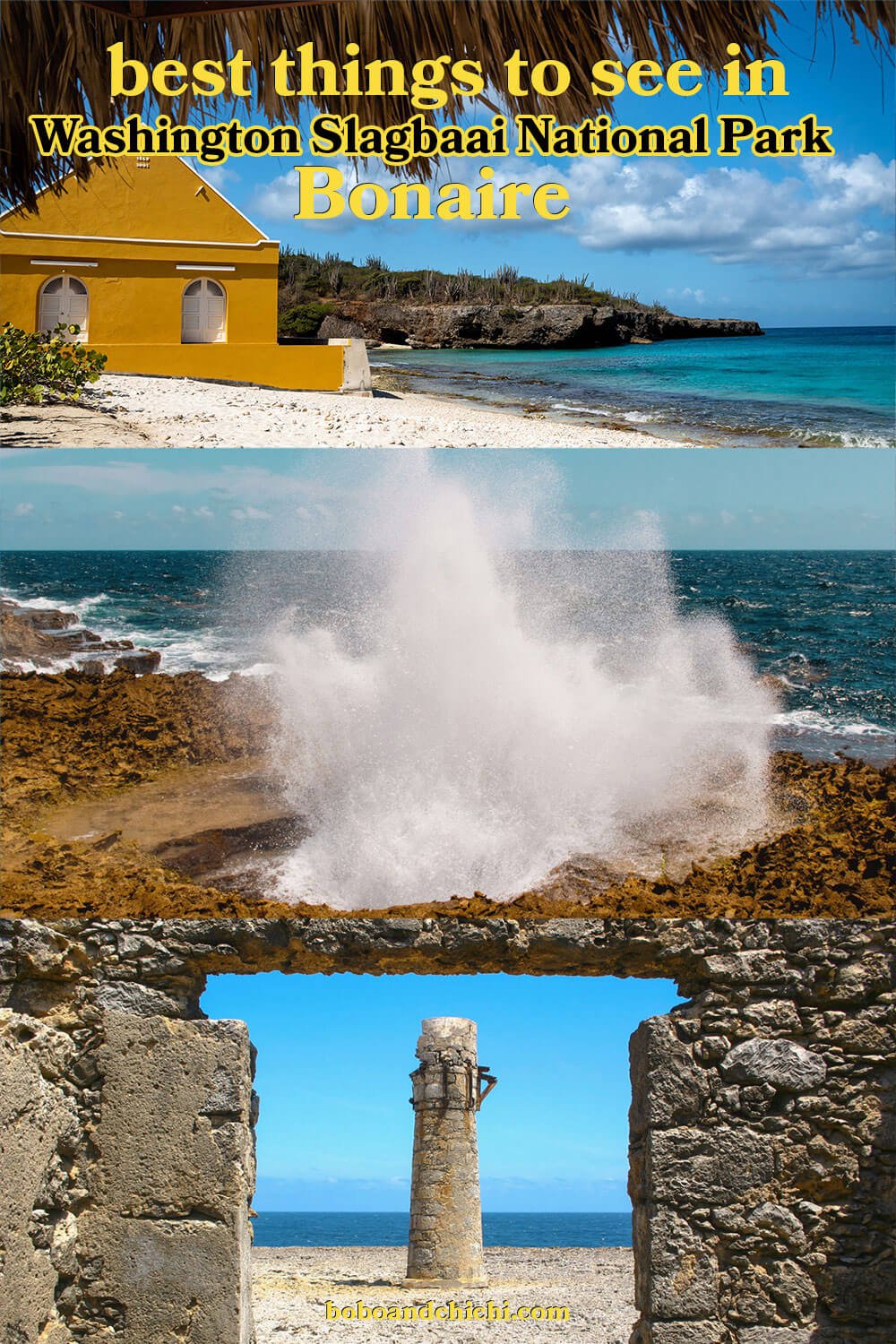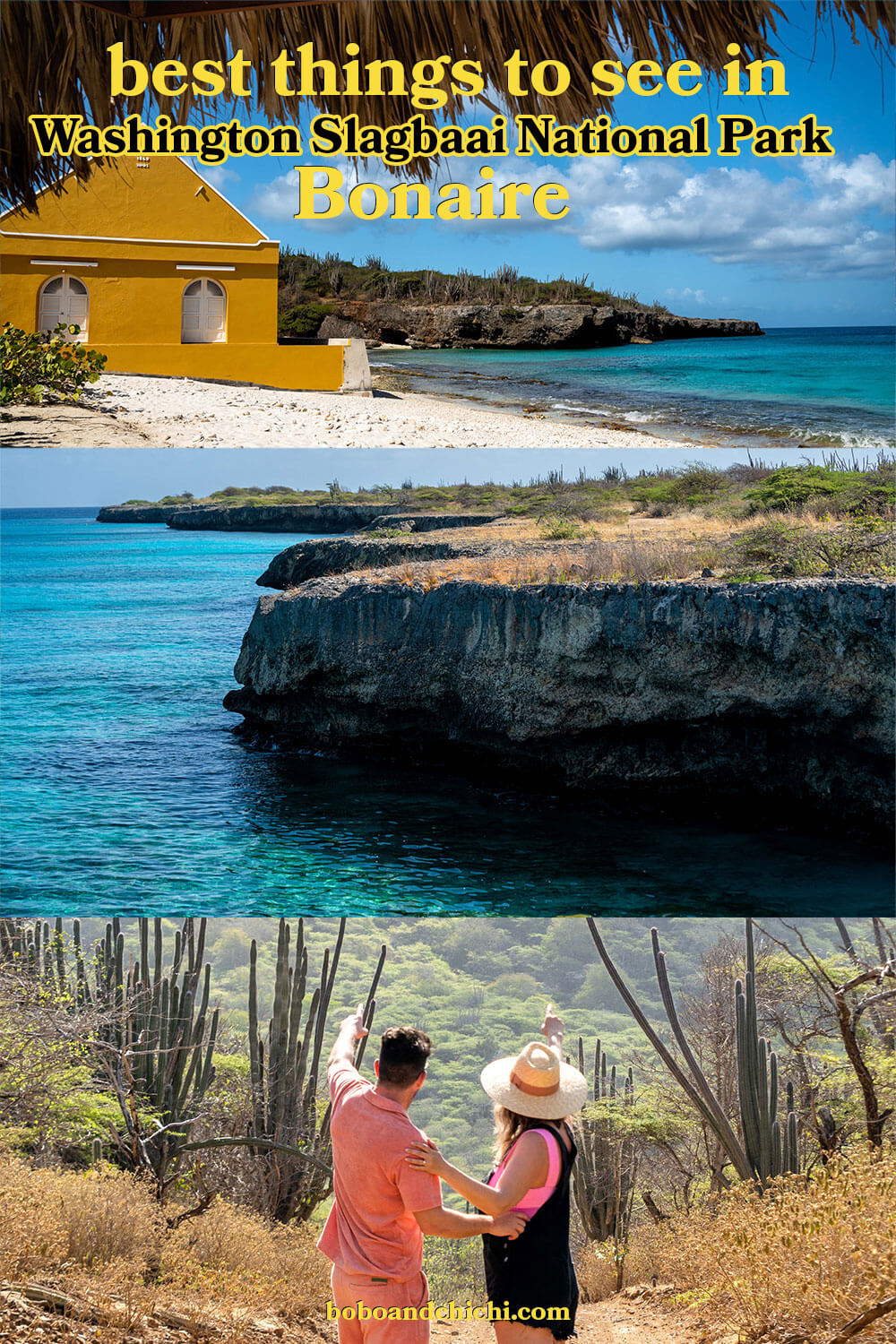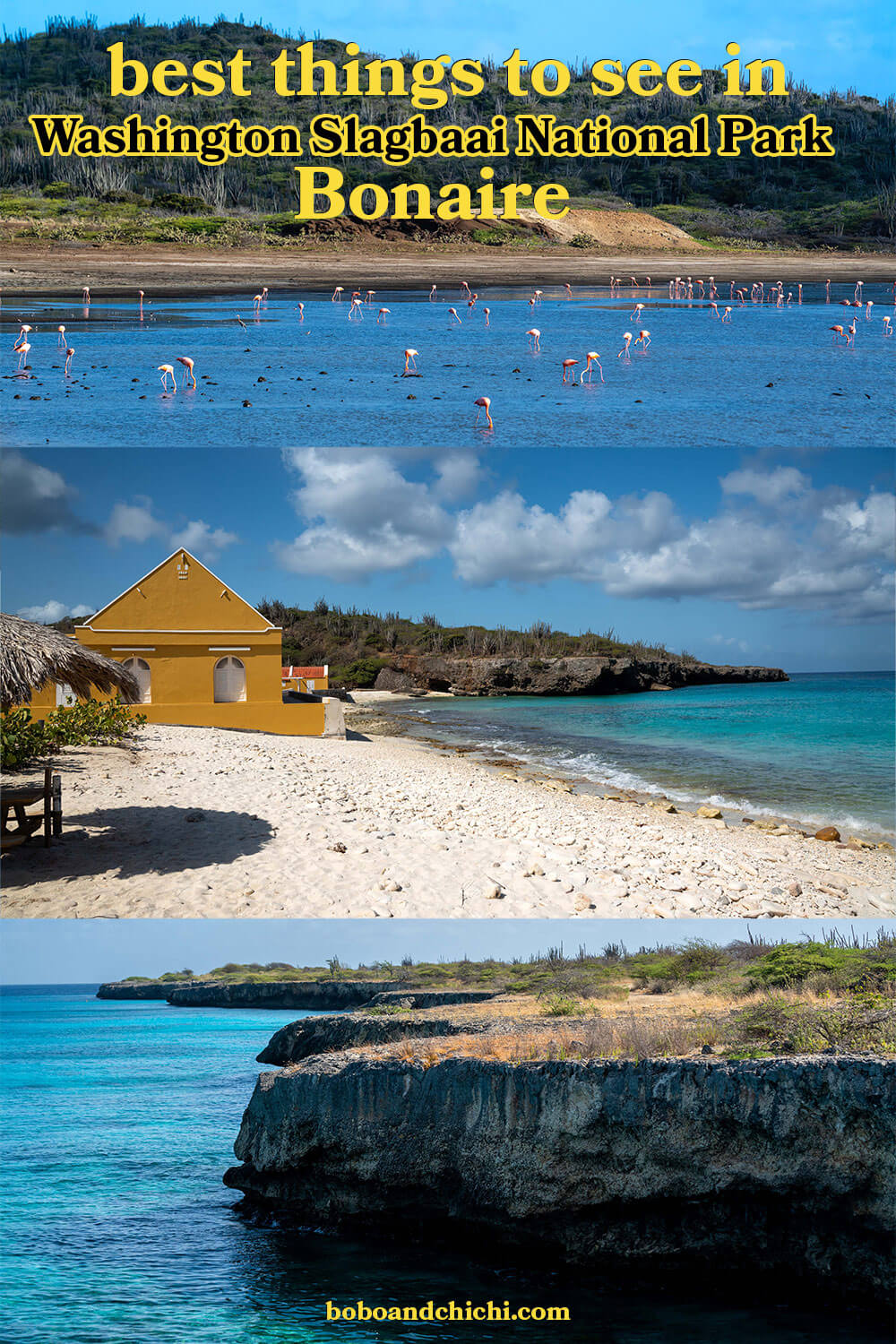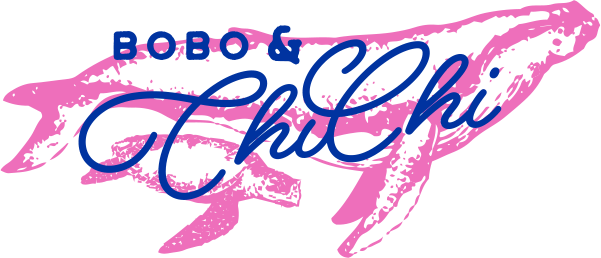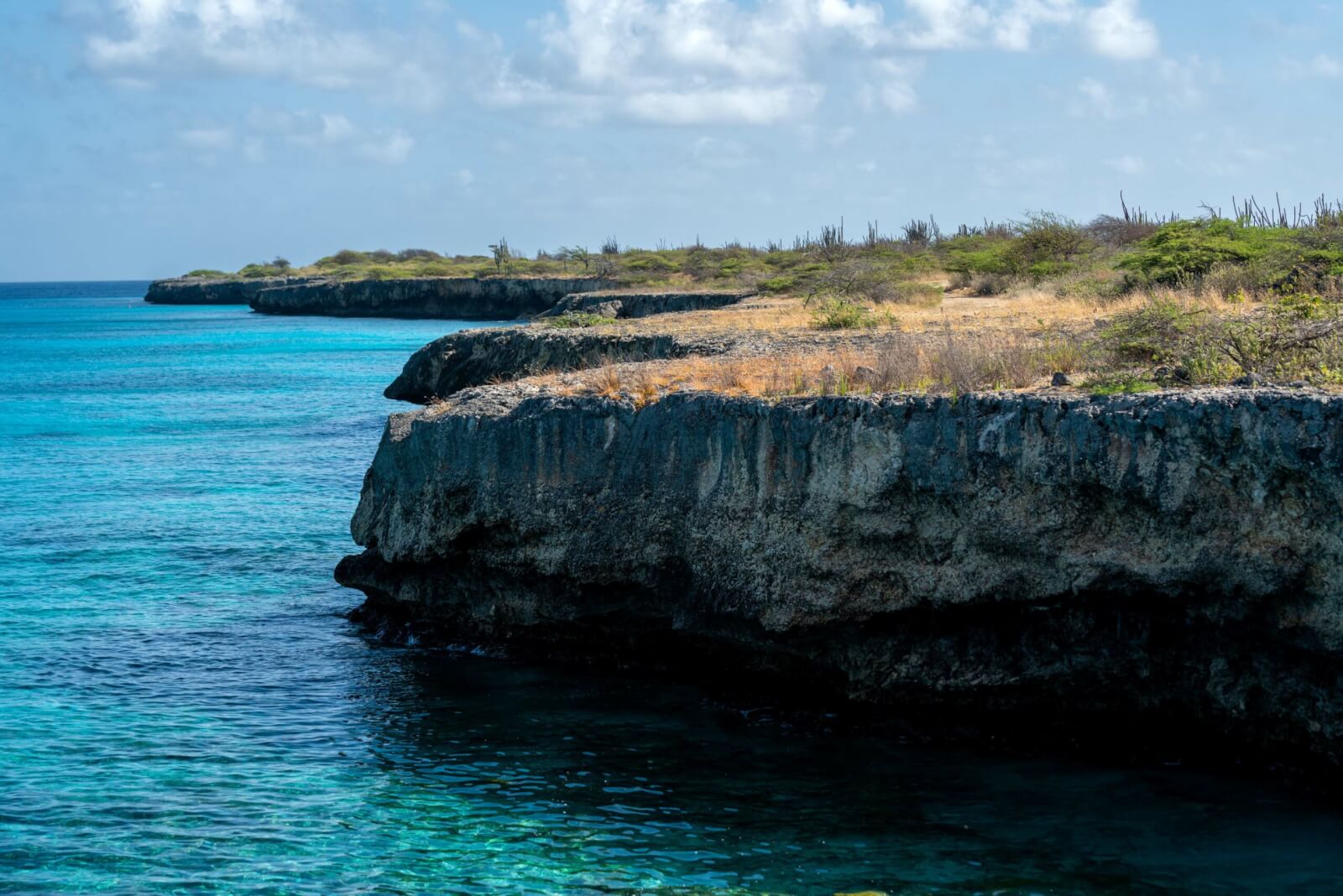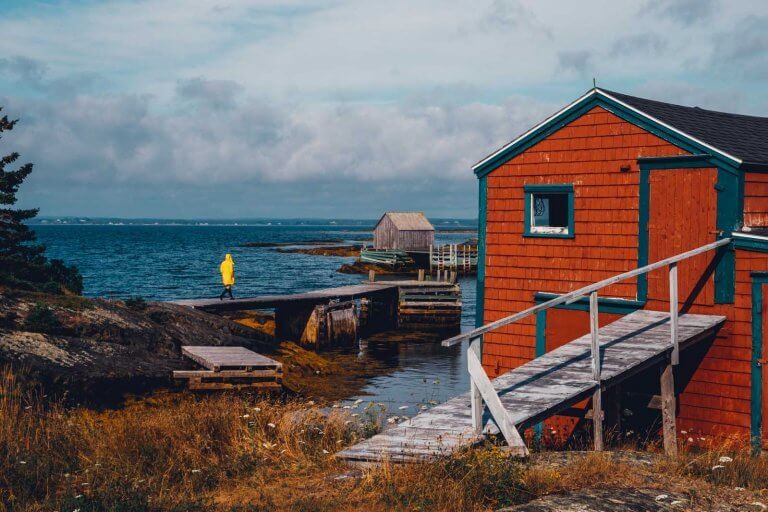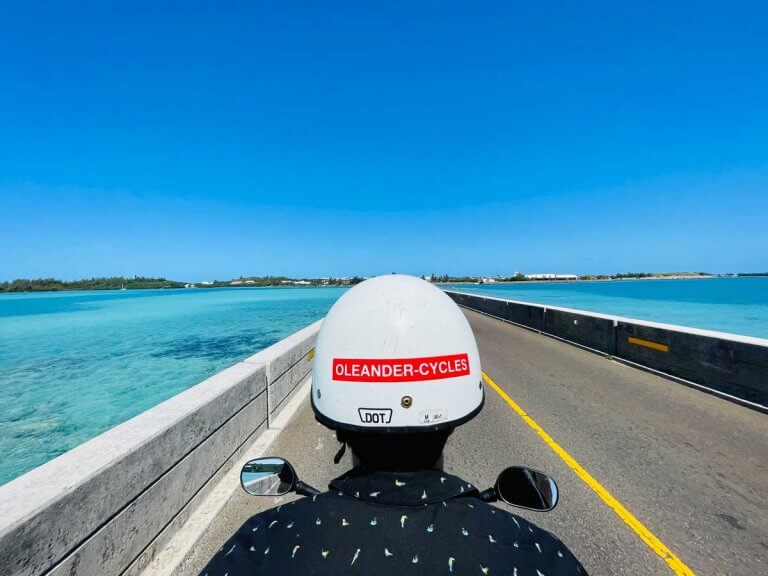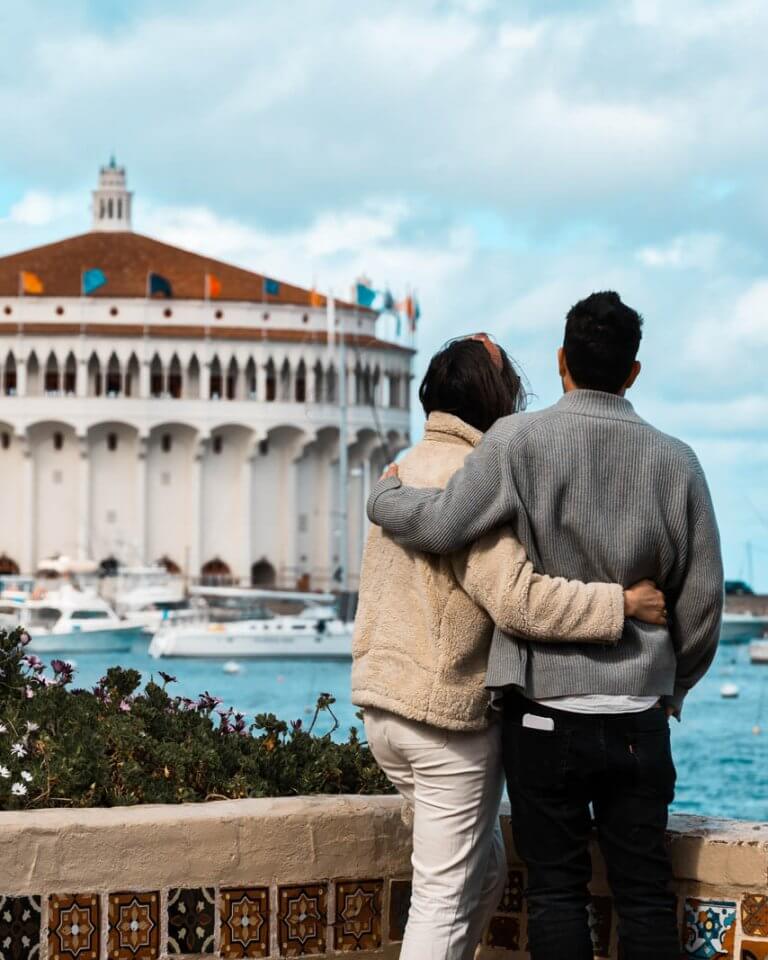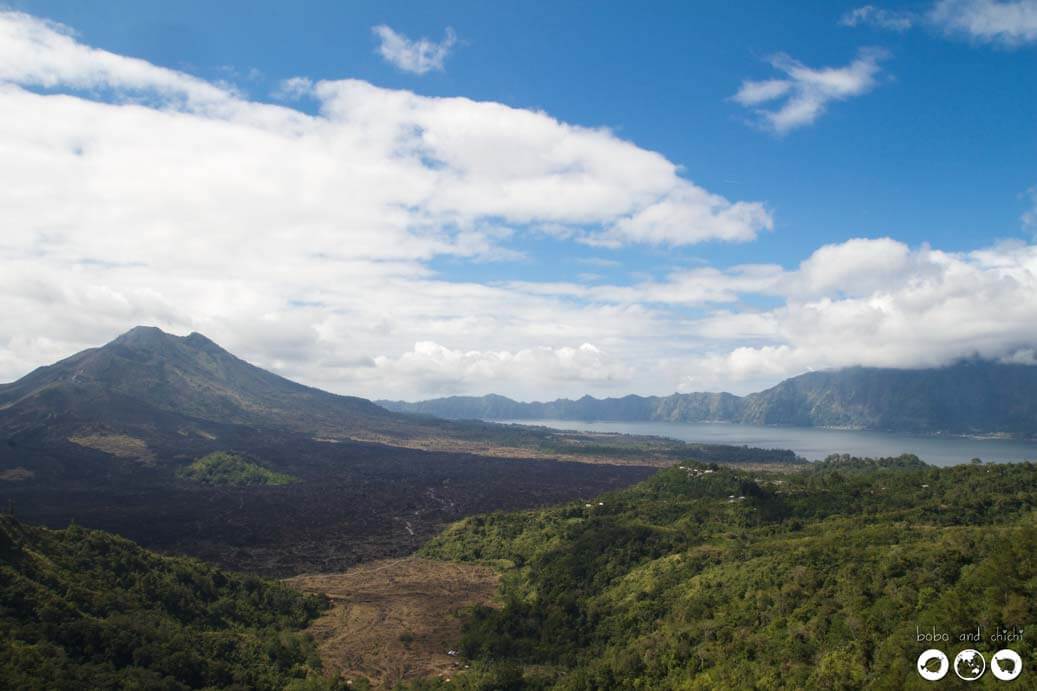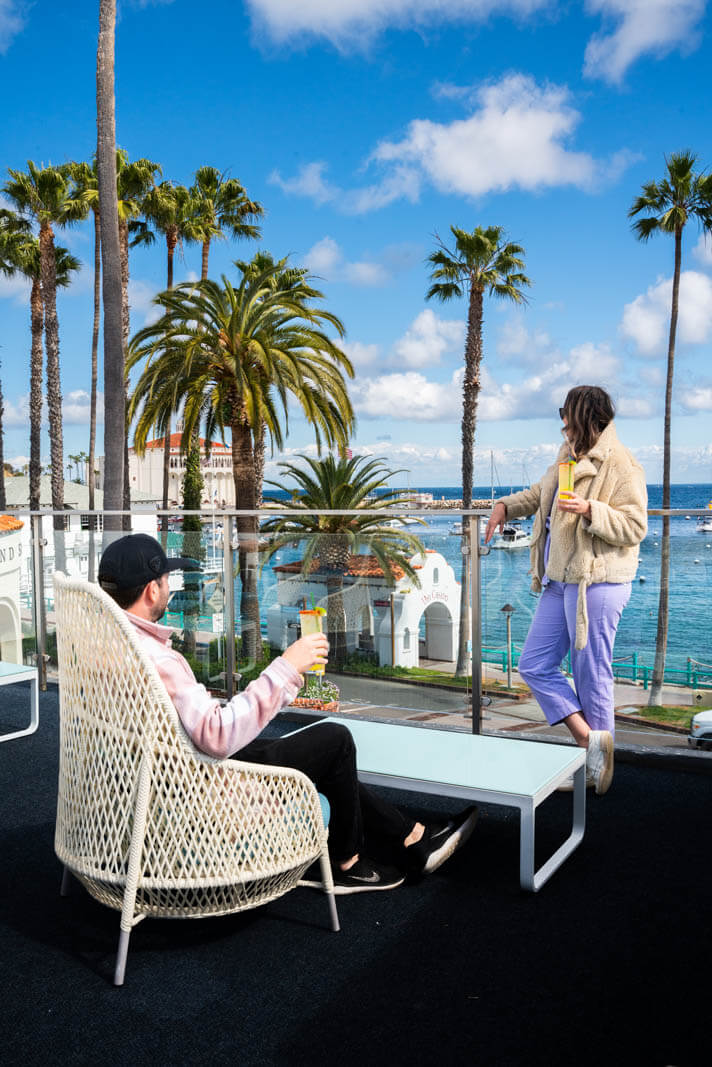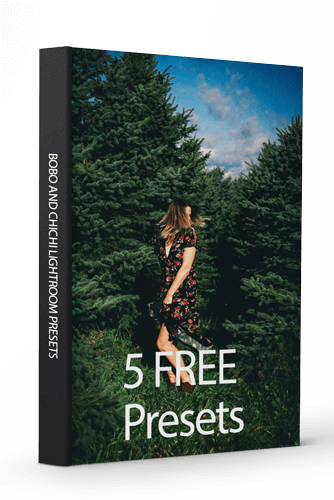Ultimate Guide to Visiting Bonaire’s Washington Slagbaai National Park
Looking to visit Washington Slagbaai National Park in Bonaire? Not sure what to see or how to go about planning your visit? We got you covered.
You do need to plan a little before visiting this gorgeous natural reserve as there are a few things to keep in mind before visiting that you’ll have to plan for – but don’t worry, we learned from our trip and decided to put together this useful guide so you can find all the information you need to know about visiting in one place.
Plus we will cover some of the best stops inside Washington Slagbaai National Park!
For starters, Washington Slagbaai National Park is an ecological reserve and protected land that makes up a fifth of the entire island of Bonaire!
Managed by STINAPA Bonaire, visiting Washington Slagbaai National Park gives visitors a chance to see some of the 340 species of plants including the kadushi and yatu cacti (which you’ll see a lot of), rugged coastline home to endangered sea turtles, supreme bird watching, geological formations, white sandy beaches with great snorkel and shore diving sites, salt pans and opportunities to see the Caribbean Flamingo (or American Flamingo), hike the highest peak on the island, and visit historic sites to name a few adventures you’ll have while visiting.
So let’s dive into this guide to the best things to see in Bonaire’s national park as well as what you need to know before showing up!
Tips for Visiting Washington Slagbaai National Park
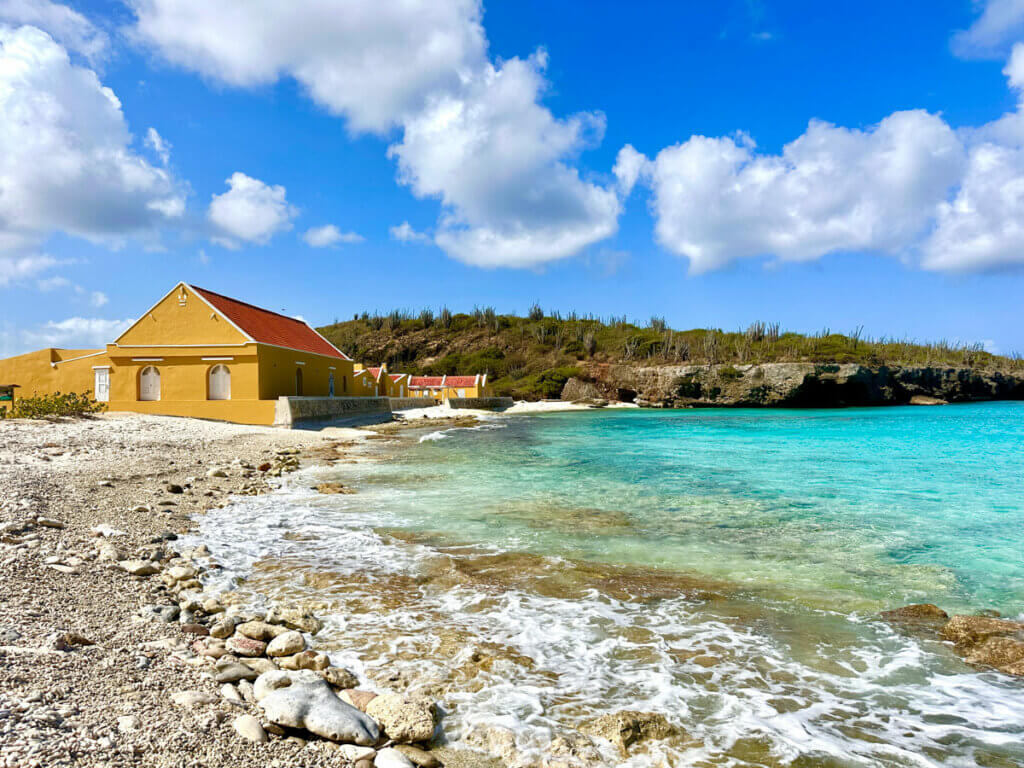
This temporary tip almost ruined our chances of visiting Washington Slagbaai National Park! Currently, the national park is closed on Mondays (until November 2023, then it reopens everyday). If you’re visiting close to or around this timeframe, it’s best to check closer to the date to see if its still in effect.
The national park opens at 8 AM, we recommend getting here early especially if you’re going to hike Mount Brandaris to avoid the mid-day heat.
Washington Slagbaai National Park is closed on some holidays and sometimes after heavy rainfall to dry out. The rainy season on Bonaire typically occurs from October to January. During this period, the island receives more rainfall compared to the rest of the year. This is when you will most likely want to check the road conditions before visiting the park, especially if there was recent heavy rainfall.
The last entrance to the park is at 2:30 PM even though as the park strictly closes at 5:00 PM. You’ll want to pay attention to the areas of the park that have cut-off times of when you need to leave to make sure you get out of the park on time.
Each visitor will have to pay a nature fee of $40-45 per person which lasts a full calendar year (if you’ve already purchased a nature fee for BNMP-protected areas or diving, show proof at the entrance as you’ll get a discounted rate). You can purchase this in person when you arrive or on STINAPA’s website in advance.
You’ll need a high clearance vehicle to gain entry into Washington Slagbaai National Park, you can easily rent a jeep, SUV, or something with 4WD or AWD, the roads are dirt and bumpy and if it’s rained recently you’ll need to be able to get through some mud. They do not let in cars that are unfit to drive on the roads. We were able to rent a Suzuki Jimmy with 4×4 for our time in Bonaire.
We booked our rental car in advance on Expedia from Flamingo Airport so we were able to use it the entire trip. Each rental company had high clearance vehicle options, so this shouldn’t be difficult to secure for your trip.
Have at least a ½ tank of gas before entering the park! It’s best to fill up the night before as the nearest gas station in Rincon didn’t open until 8 AM and we were trying to get into the park immediately. Another thing to keep in mind during your visit to Bonaire is that gas stations do not take credit cards and our debit cards didn’t work, so have cash for gas!
Bring in your own drinking water, make sure you have enough for the day, snacks, food, and protection from the sun including reef-safe sunscreen if you plan on getting in the water.
A few of our favorite reef-safe sunscreens include:
- Kokua Sunscreen – water-resistant zinc sunscreen that applies smoothly without white residue
- Sun Bum Mineral Sunscreen – the Mineral line (white bottle with brown text that says ‘mineral’) is a clear, fast-absorbing zinc-based sunscreen that’s great for sensitive skin and is sweat and water-resistant.
- Thinksport Mineral Sunscreen – We have been using this brand for years and love how easily it applies and is water resistant. They are also a bit more affordable.
- Supergoop! Unseen Sunscreen – this sunscreen is not only reef-safe but it’s also super hydrating, this one is a little pricier so we recommend using this on the face and neck area since it falls under more of a skincare product as well.
There are no facilities once you’re inside Bonaire’s national park except bathrooms at the entrance and at the last stop at Boka Slagbaai. So be sure to take advantage of the restroom when you first enter!
Drones are prohibited inside Bonaire’s national park. Vehicles are subject to being searched, not that this happens frequently, so if you do have a drone with you it’s probably best to keep that at the hotel the day you visit Washington Slagbaai National Park.
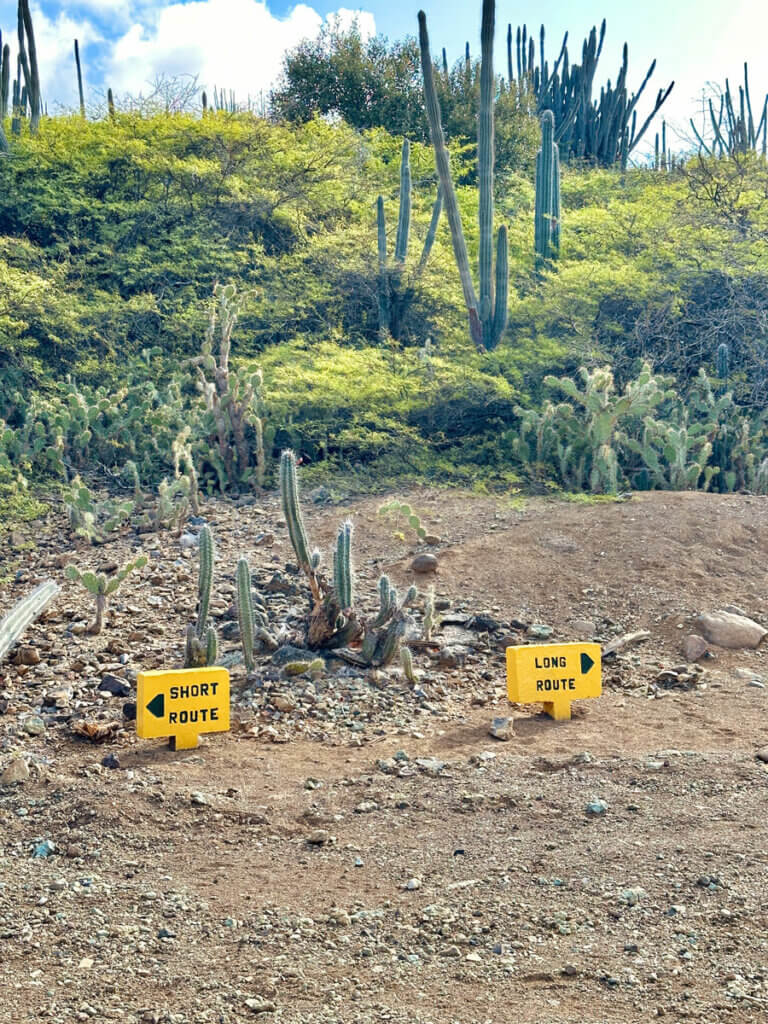
There are two main routes for the park, the long route which takes around 2.5 hours to drive, and the short route which takes around 1.5 hours to drive – adding more time for extra stops or hiking within the park.
You’ll need to determine which one you have time for (or if you have time for both! If you want to hike Mount Brandaris, you can only access the trailhead by taking the short route and it’s recommended you do this first thing in the morning.
If you plan on snorkeling anywhere in Bonaire including the national park, invest in a pair of water shoes for easy access in and out as sometimes you’re entering in on rocks or fossilized coral which is hard to do barefoot.
It’s so easy to buy a snorkel set for everyone in your family in advance as you’ll most likely want to snorkel at multiple places in Bonaire being one of the best places to do that in the Caribbean and the shore diving capital of the world! Not to mention, some of the best spots for snorkeling in Bonaire can be found in Washington Slagbaai National Park.
We both bought this snorkel set which included a mask, snorkel, ear plugs, flippers, and carrying bags which were perfect for hopping around beaches and snorkeling in Bonaire! (we both pack carry-on only and were able to easily fit it in our bag too!)
It’s also necessary to have a pair of water shoes too to wear under your flippers! You’ll encounter many rocky entrance points or pebbly beaches, so this is crucial for getting in and out of the water with ease and also protecting your tootsies for sea critters like urchins (which you’ll still need to carefully avoid even with shoes on). These also fit in the snorkel set bag we bought!
When snorkeling or diving don’t leave your food out, critters like iguanas will steal your lunch.
If all of this seems intimidating to do on our own, you can join a small guided tour of Washington Slagbaai National Park instead which takes care of all the planning, high clearance vehicle requirements, driving and stops.
Washington Slagbaai National Park Map
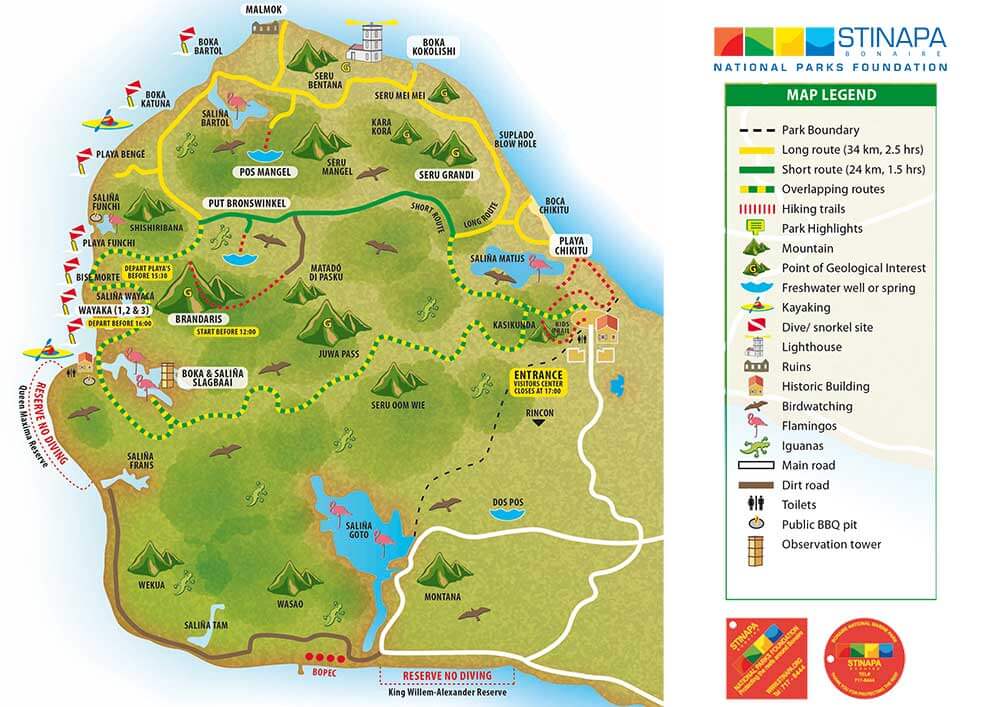
Here’s the Washington Slagbaai National Park map courtesy of STINAPA. This map of the park includes park highlights and stops you can make as well as where the long route (yellow) and short route (green) are.
Keep in mind that the road here is one way only. So don’t pass something you want to see as there is no way of going back without completing the entire route.
Give yourself another 30 minutes from the last stop at Boka Slagbaai to exit the park and prepare yourself for a bumpy, dirt road throughout the entire park.
Things to See in Washington Slagbaai National Park
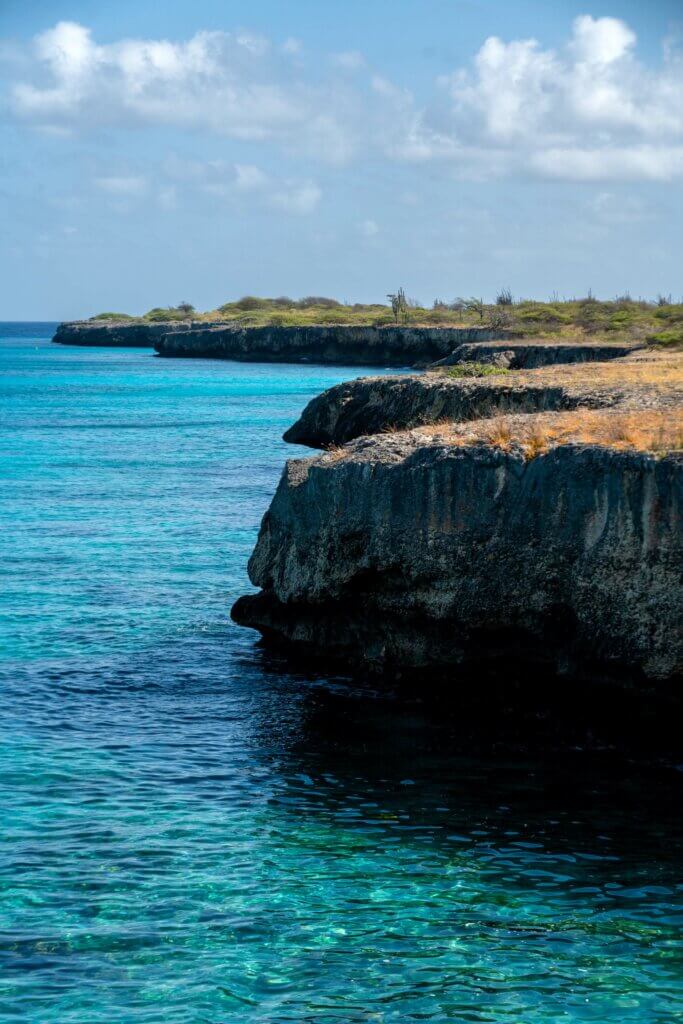
You likely won’t be able to see it all in one day, pick and choose based on what interests you and how much time you have!
This first section will include stops in Washington Slagbaai National Park that are on the overlapping routes (long/yellow route and short/green route) before splitting off.
Then, I will cover the best stops in Washington Slagbaai National Park on the short/green route.
Followed by best things to see on the long/yellow route.
Lastly, stops when the short and long routes merge again.
Washington Slagbaai National Park Stops Before the Routes Split:
WASHINGTON SLAGBAAI NATIONAL PARK VISITOR CENTER MUSEUM
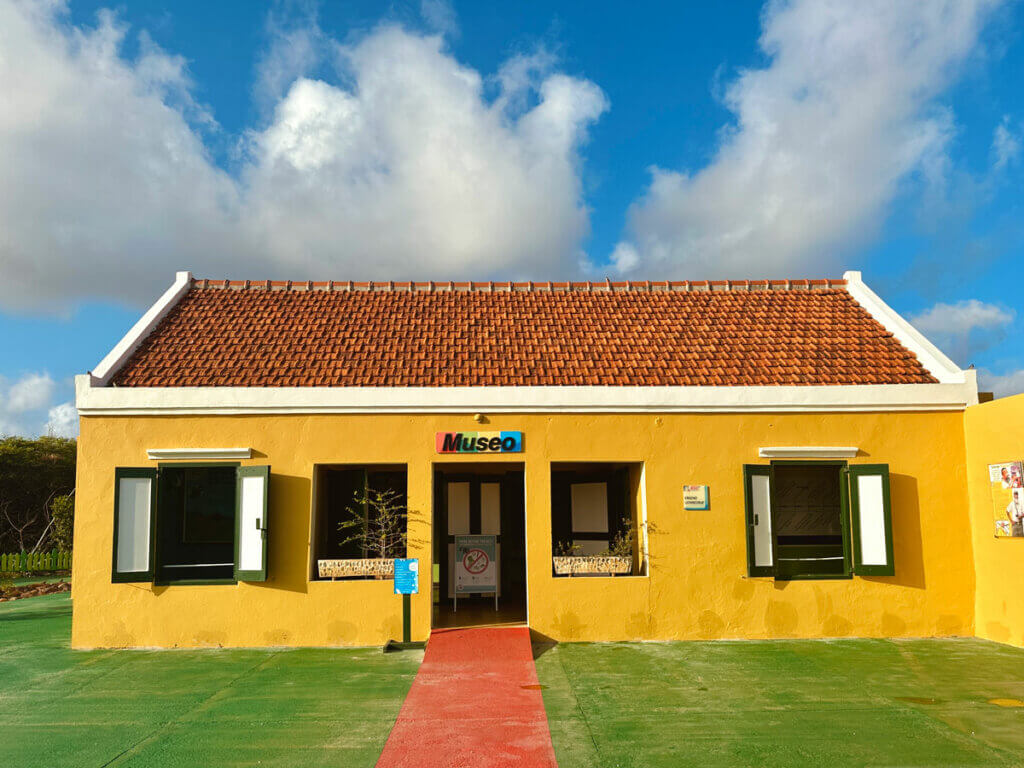
Upon entering Washington Slagbaai National Park, your first stop will be the Visitor Center Museum. In addition to being a museum, it is also a library, gift shop, information about the walking paths, and a terrace where you can grab a bite and drink.
Learn about the history and geology of Washington Slagbaai National Park through exhibits like the Terrestrial Flora and Fauna of Bonaire.
There are other exhibits that discuss birds and other animals that live in the park. One of the coolest things here is the skeleton of a whale, specifically Bryde’s Whale, that was assembled by about 20 Bonaire high school students.
For the little ones, there is a kid’s nature trail, which consists of a short loop with a swing set. There are small picnic tables on site, which are perfect to enjoy breakfast before embarking on your journey.
You can stop by the Visitor Center Museum at the beginning or end of your visit, depending on how you plan to tackle the day too.
Also, perhaps the most important thing to note is that this is the last spot to use the restroom until Boka Slagbaai, so be sure to use that before taking off and making sure you have enough water.
LAGADISHI WALKING TRAIL
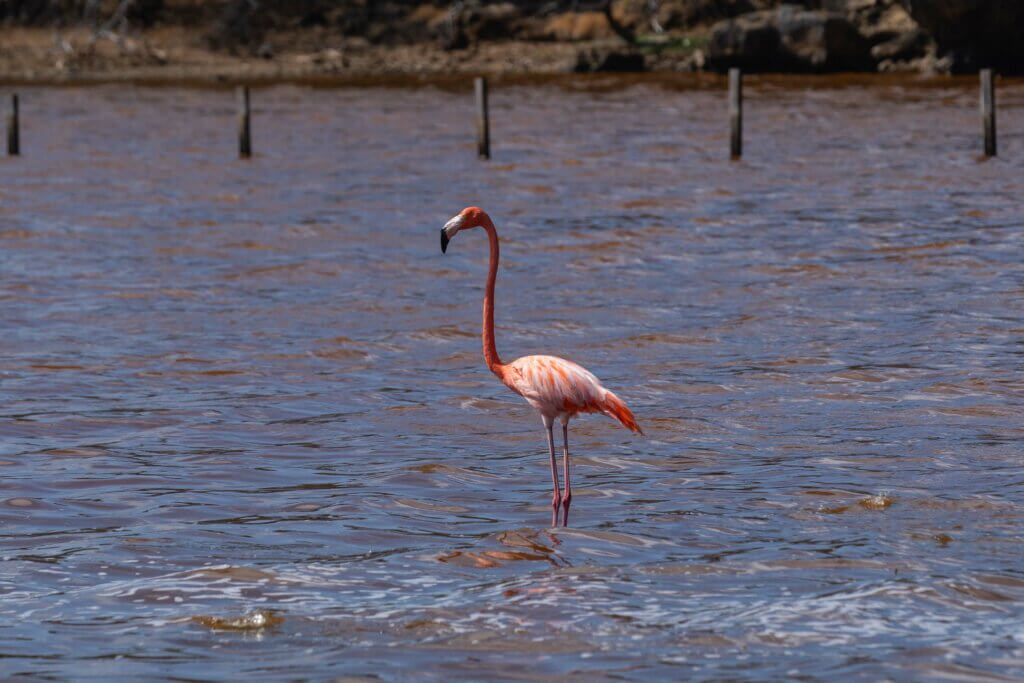
Getting out on established walking paths is a fantastic way to immerse yourself in the natural beauty of the park.
Washington Slagbaai National Park has three official hiking trails, and the Lagadishi Walking Trail is the least difficult of the group.
The trail takes you over a limestone plateau, giving you access to views of sand dunes, mangroves, blowholes, salt pan, a true oceanic beach, historic spots, and the salty habitats with vegetation that have adjusted to the dry climate on the windward side of the island. When you pass by the salt pan, be on the lookout for flamingos!
The hike starts at the park’s visitor center, and takes around two hours to complete. You don’t need to have hiking experience to traverse this path, making it suitable for a good range of people.
KASIKUNDA CLIMBING TRAIL
If you are in the mood to challenge yourself athletically while exploring the park, break out your hiking boots and head over to the Kasikunda Climbing Trail.
This hike lives up to its name, as you will truly be climbing up a steep and uneven path to the top of a volcanic hill. And the reward for such a treacherous trek is a spectacular view of the north of Bonaire, stretching from Malmok to Spelonk.
The Kasikunda Climbing Trail is on the tough side, and people with hiking experience or who are in physically good shape should do this excursion.
This hike starts at the park’s visitor center, and clocks in at just under a mile. It takes about 45 minutes to reach the top, and it is a loop trail. For those who enjoy a good hike, the Kasikunda Climbing Trail is one of the best stops in Washington Slagbaai National Park.
SALINA MATHIJS
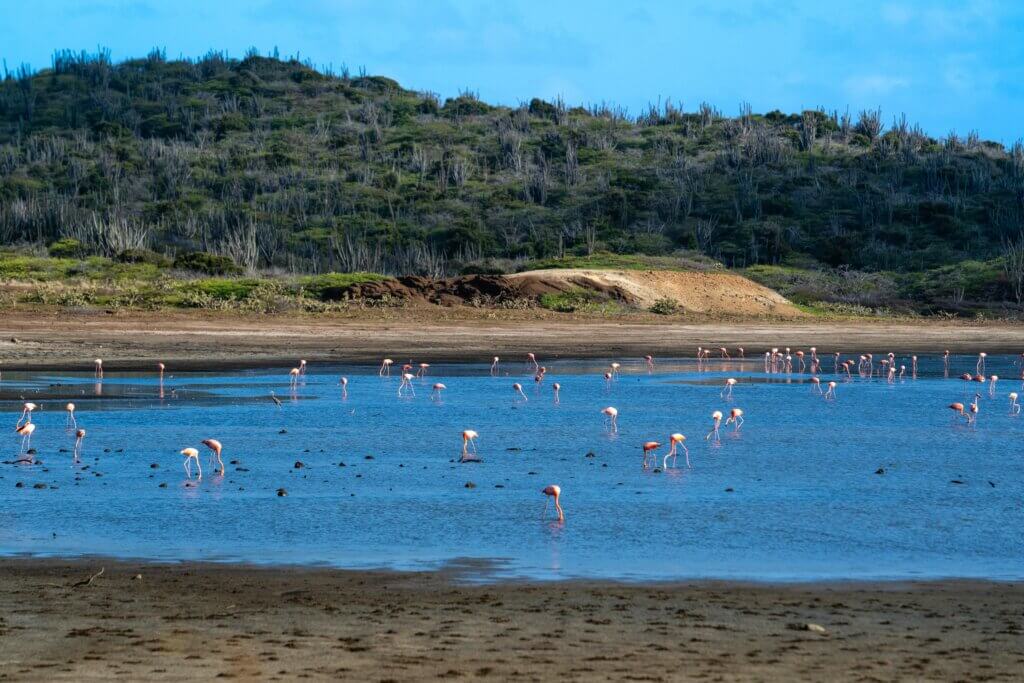
There are a variety of different salinas located within the park. Salinas are salt pans, salt lakes, or salt marshes that are usually found close to the ocean, but separated from the sea by a barrier made of coral and rubble.
They are hypersaline and flooded to some degree, either permanently or temporarily. Marine life like crabs and mollusks, as well as flamingos and herons, use salinas to live, feed, and even breed.
Salina Mathijs is a salt pad, and flamingos are known to roost here. This is the last attraction before the driving routes split, so no matter which route you decide to take, you will pass by Salina Mathijs.
Washington Slagbaai National Park Stops Only on the Short Route:
The short route/green route takes a minimum of 1.5 hours to drive and is a total of 15 miles/24 kilometers to drive. After entering the park and paying your nature fees you’ll need to follow the green route on your map which branches off to the LEFT when you come to the fork in the road after Salina Mathijs.
There’s a sign indicating this is the direction of the short route, don’t miss this as all of the roads here are one way and there’s no turning around.
MOUNT BRANDARIS
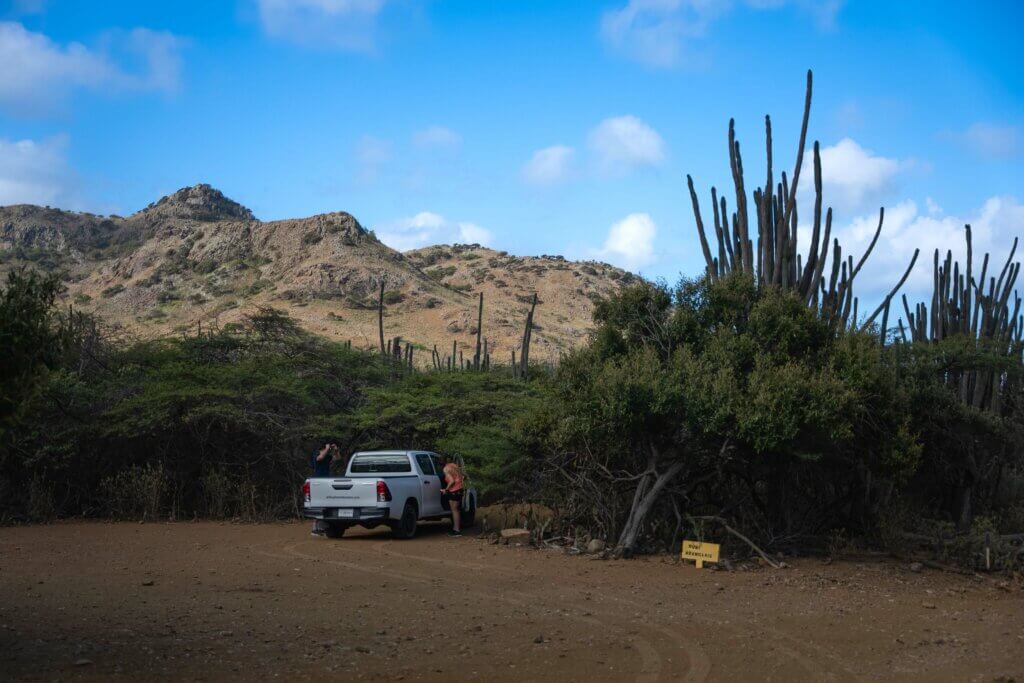
Another fantastic hike you can do in Bonaire National Park is to trek to the top of Mount Brandaris. It is the tallest peak on Bonaire, coming in at just under 785 feet high. It is a difficult hiking path, but you will be rewarded with incredible scenery.
When you are about to start the hike at the bottom of Mount Brandaris, be on the lookout for exotic parakeets, as they tend to linger at the bottom of the mountain.
Then, when you make your way over to start the hike, you will go through a gate. Make sure to close the gate behind you, or goats may wander into the park. In fact, the gate’s purpose is to keep the goats out!
Follow the signs and markers as you hike up Mount Brandaris, and enjoy the picturesque views. The hike should take anywhere from 30 to 60 minutes to reach the top of the mountain.
Please note that in order to exit the park before it closes, you will need to start the hike before noon. Not to mention you’ll want to do this first thing in the morning before it gets too hot too. Don’t forget to bring plenty of drinking water!
Make sure to include Mount Brandaris on your list of things to see and do in Washington Slagbaai National Park.
PUT BRONSWINKEL
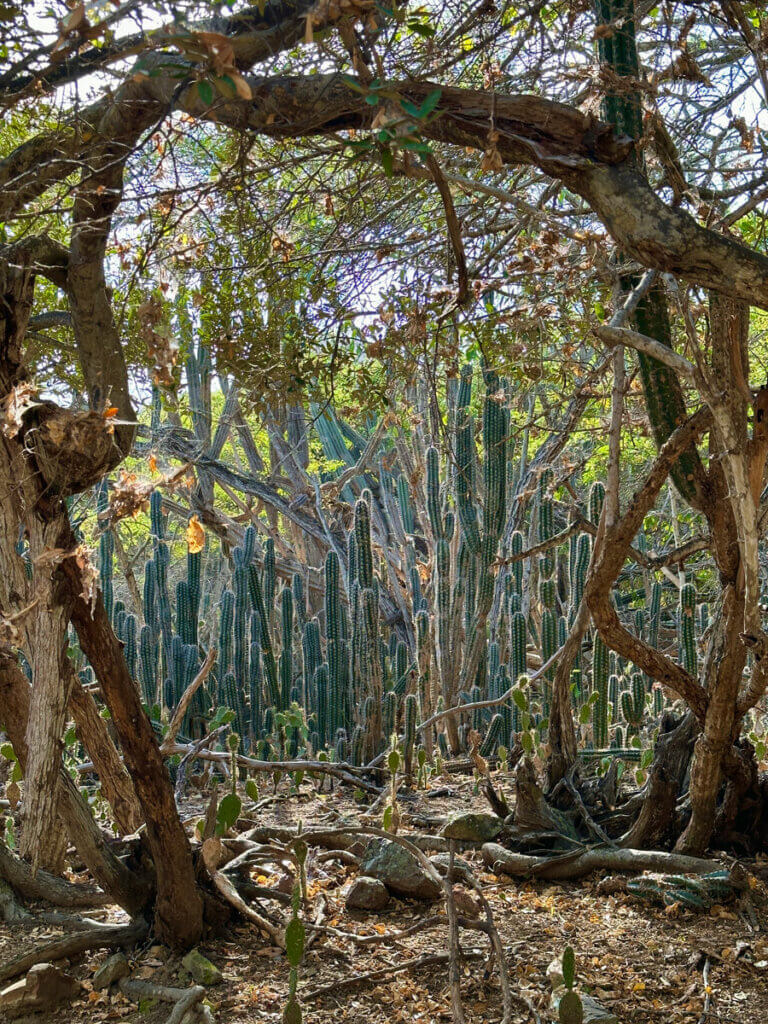
There are two freshwater springs on Bonaire, and Put Bronswinkel is one of them. This is a very lush, green spot with lots of big trees and vegetation, attracting lots of birds that hang out here.
As far as places to watch birds in Washington Slagbaai National Park go, Put Bronswinkel is pretty much a perfect spot for birdwatching.
Some of the birds you will see include Bananaquits, Parrots, Flycatchers, Pearly-eyed thrashers, lots of songbirds, and other types of breeding and migrating birds.
There are picnic tables scattered throughout this area, so you can sit or stand when settling in to watch what the birds are up to.
Additionally, in certain parts of Put Bronswinkel, there are brief walking trails where you can gaze at the native trees and flora.
This is also the last stop on the short loop before the long loop and short loop merge again.
Washington Slagbaai National Park Stops Only on the Long Route:
The long route/yellow route takes a minimum of 2.5 hours to drive and is a total of 21 miles/34 kilometers to drive. After entering the park and paying your nature fees you’ll need to follow the yellow route on your map which branches off to the RIGHT when you come to the fork in the road.
There’s a sign indicating this is the direction of the short route, don’t miss this as all of the roads here are one way and there’s no turning around.
PLAYA CHIKITU AND BOKA CHIKITU
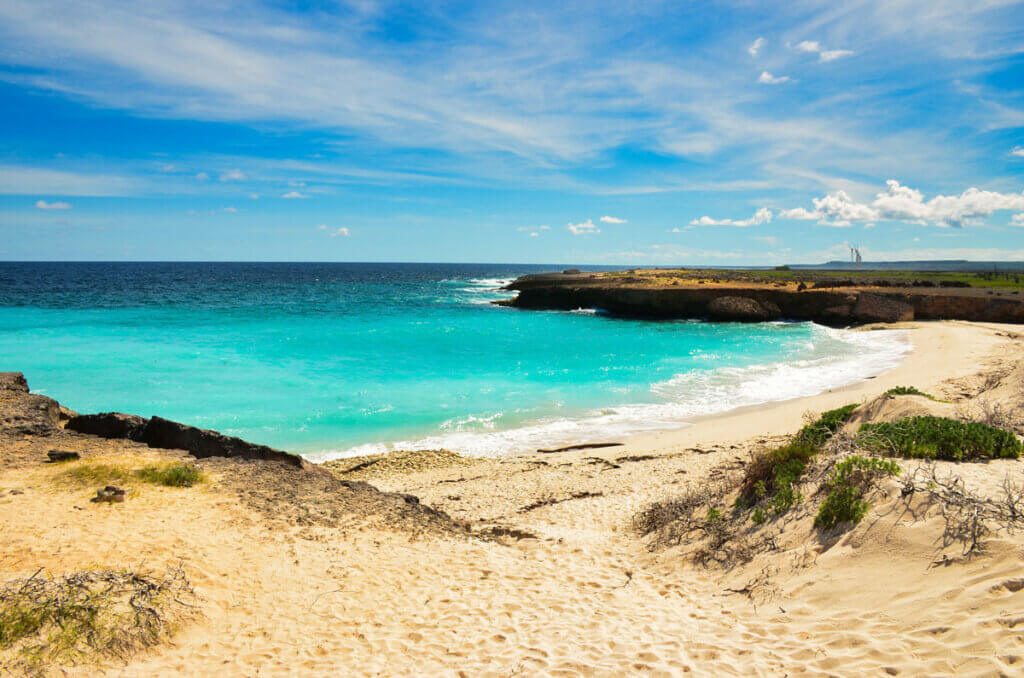
Bonaire National Park has some really stunning and interesting beaches, in fact some of the best beaches in Bonaire can be found inside the national park.
Playa Chikitu is a gorgeous white sand beach, where it is known to be very windy, and the waves here are rather massive, so don’t attempt swimming here as tempting as it may be. Additionally, Playa Chikitu has the only sand dunes on Bonaire, and sea turtles are known to nest here.
At this spot, you can climb down to the beach and take a stroll and sunbathe. The strong currents and lack of corals make this an unsuitable place for swimming and snorkeling. Simply put, the waves are just too big to swim here!
Boka Chikitu is the counterpart to Playa Chikitu, and both spots are great places to look for djukus. Known as Bonaire’s “lucky beans”, djukus are nicknamed hamburger beans for their appearance. Djukus are seeds from a pod of the Mucuna urens, a plant that is actually not native to Bonaire. The seeds are carried in the ocean, and some wind up on Bonaire’s shoreline.
Be sure to hit up Playa Chikitu and Boka Chikitu when checking off your list of things to see and do in Washington Slagbaai National Park.
SUPLADO BLOWHOLE
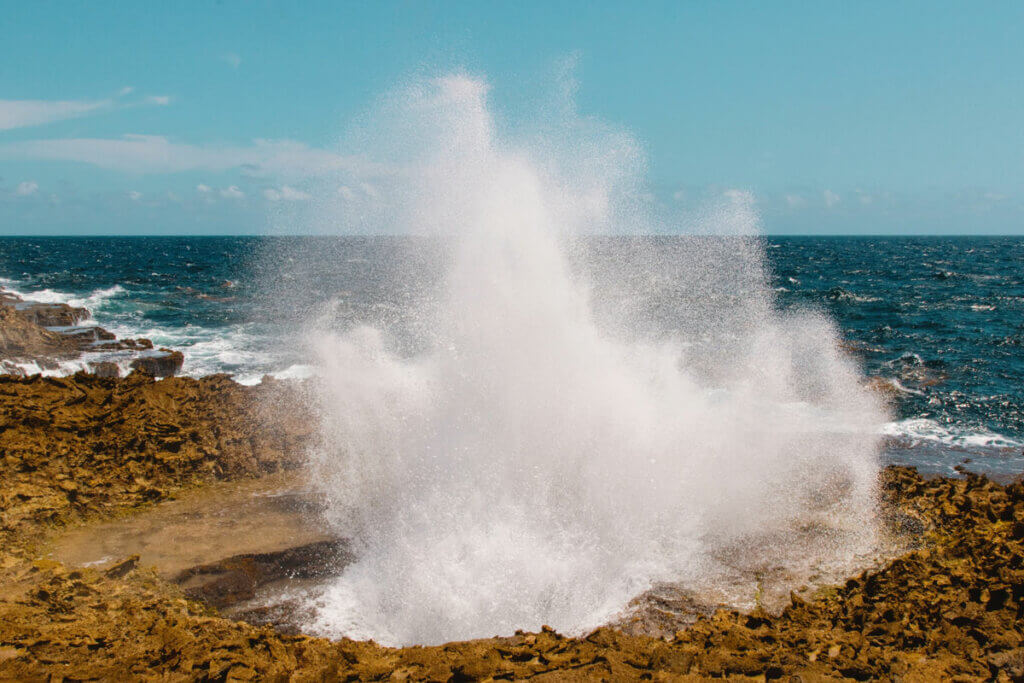
There are a handful of blowholes located around Washington Slagbaai National Park that showcase a unique and powerful side of nature.
Blowholes are created when the ocean water is extremely confined by the coral rocks under such high pressure that it forces the water out the only possible way, which is up! It’s basically nature’s very own water fountain.
The Suplado Blowhole is perhaps the most magnificent of all the blowholes in the park. It is situated at the edge of the water, so stand back and watch the water shoot up and then gently mist the area beneath.
While you’re here, check out the formations named Suro Bentana, known as window hill, and Kara Kora, known as red face.
The Suplado Blowhole is located at Seru Grandi, making for great views of that location. Checking out the Suplado Blowhole is definitely one of the best stops in Washington Slagbaai National Park.
BOKA KOKOLISHI

One of the popular destinations in Bonaire National Park is Boka Kokolishi, whose name translates to “Bay of Shells”. Kokolishi shells are scattered throughout the beach, and if you grab a handful of sand you will see that the sand is just tiny pieces of shells.
This area is a bay bordered by cliffs, and contained in the cliffs are fossilized conch shells. There are fairly easy steps with handrails to reach the bay, and once you’re there you will find a black sand beach. Because the beach is protected from the wind, you can actually cool off and swim here in the calm pools.
Also, you can meander through the tide pools, and set up an umbrella and have a picnic. If you start wading into areas with water, make sure you only get out in the water up to your knees, as going out far into the powerful waters is too risky and dangerous.
Overall, it is a pretty calm spot, due to the basin being protected by the side facing the sea.
SERU BENTANA LIGHTHOUSE
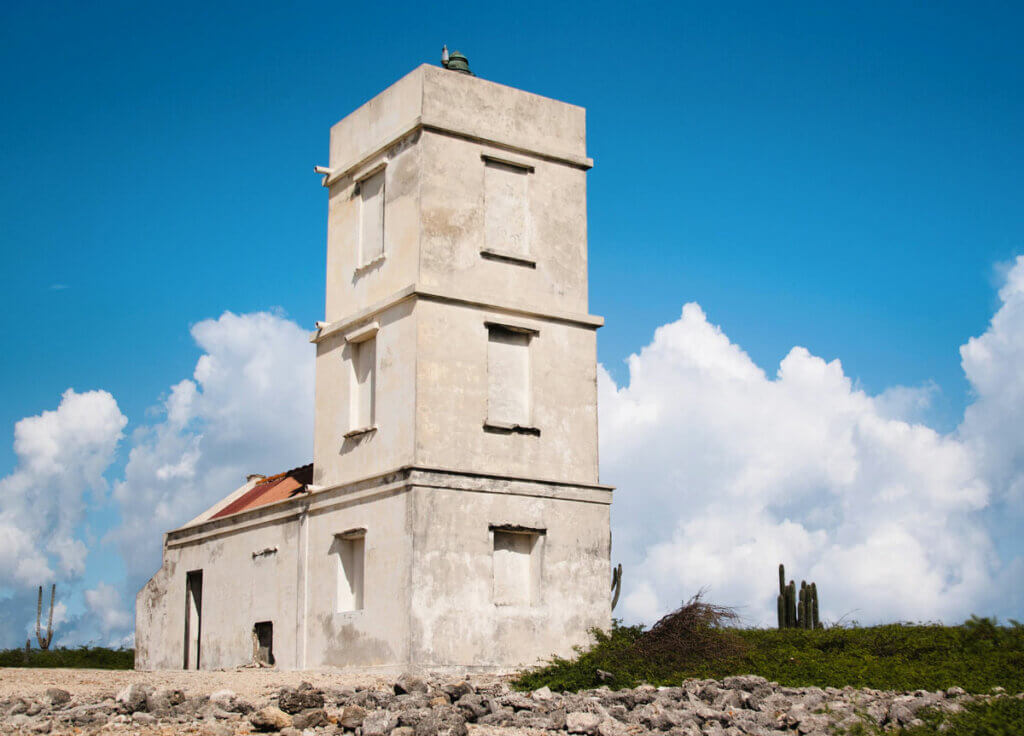
Bonaire has three lighthouses and two light beacons to help guide vessels through the treacherous and unforgiving waters surrounding Bonaire.
As the years have gone by, salt and wind have greatly contributed to the deterioration of the lighthouses. There have been renovation efforts to restore the lighthouses in the past 10 to 15 years.
The Seru Bentana lighthouse was renovated in 2012. The lamp was replaced, and parts appropriate for the time period when it was built were used when installing the new lamp. The old lamp was transferred to Museu Bonaire for safekeeping.
The Seru Bentana Lighthouse is an interesting looking structure, with three off-white square blocks stacked on top of each other, topped with the lamp. The tower is grounded by a building the same color as the tower with a terracotta-colored roof.
MALMOK RUINS
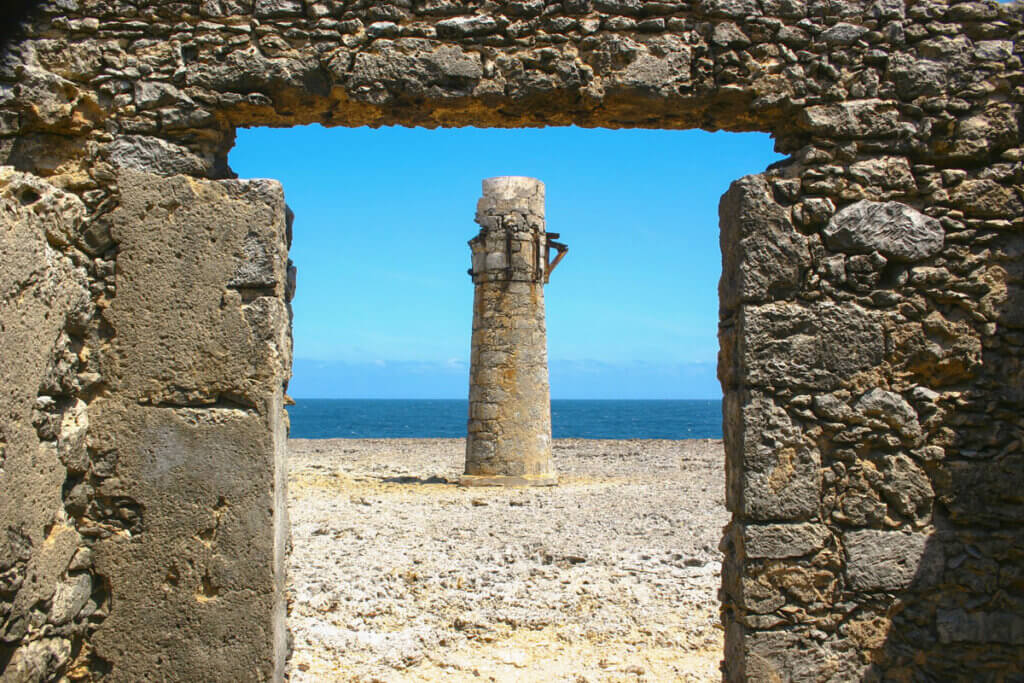
On the northernmost point of Bonaire you will find Malmok Ruins, a geological spot with several historical events documented here.
So, what kind of historical events? Amerindian camps in AD 800, 15th century shipwrecks, and remains of weather events like hurricanes and tsunamis.
Additionally, the ruins from the Malmok lighthouse that date back to the 19th century can be found here. The lighthouse was constructed but never lit, because it was decided that the lighthouse would be safer in a more elevated location, away from the harsh weather conditions.
For a unique experience, the Malmok Ruins is among the best stops in Washington Slagbaai National Park.
BOKA BARTOL
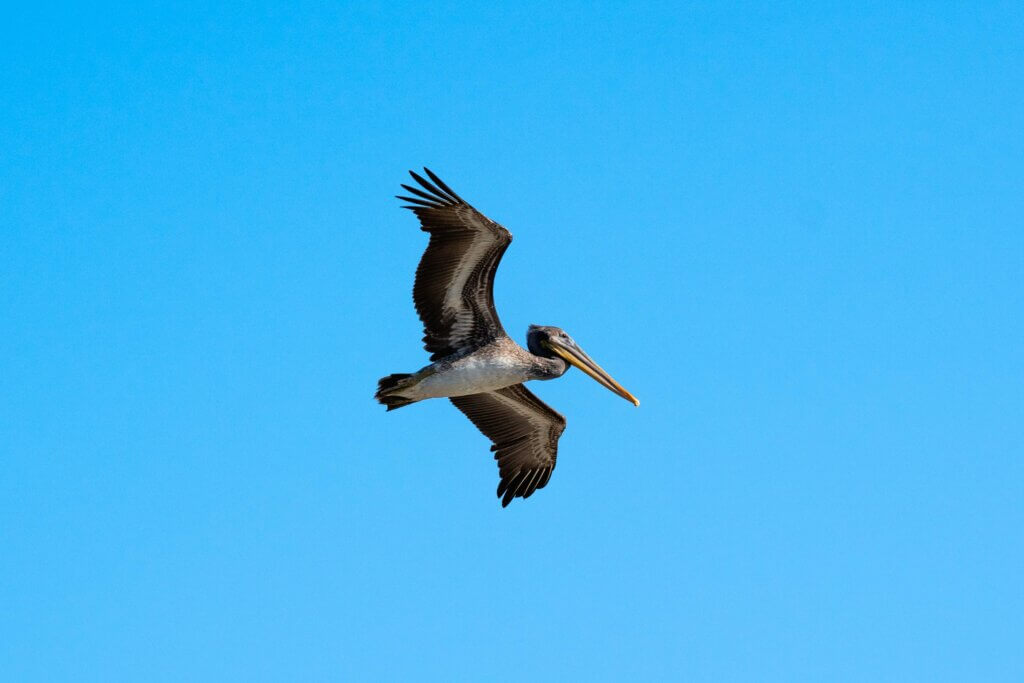
Divers, rejoice! There are several excellent dive spots around the park. Boka Bartol is the northernmost dive site on Bonaire, and it’s in a supreme location, making it the top dive site.
This is a rocky beach, surrounded by cliffs. And if you look closely at the cliffs, you can see if any Brown Pelicans are hanging out. Rays and garden eels tend to hang out on the shallow ocean floor, along with interesting coral formations, and bigger specifics of fish tend to linger here. The depth is between 20 to 80 feet.
Boka Bartol is mainly only a dive site, it is not really a good place to hang out if you are not diving.
SALINA BARTOL
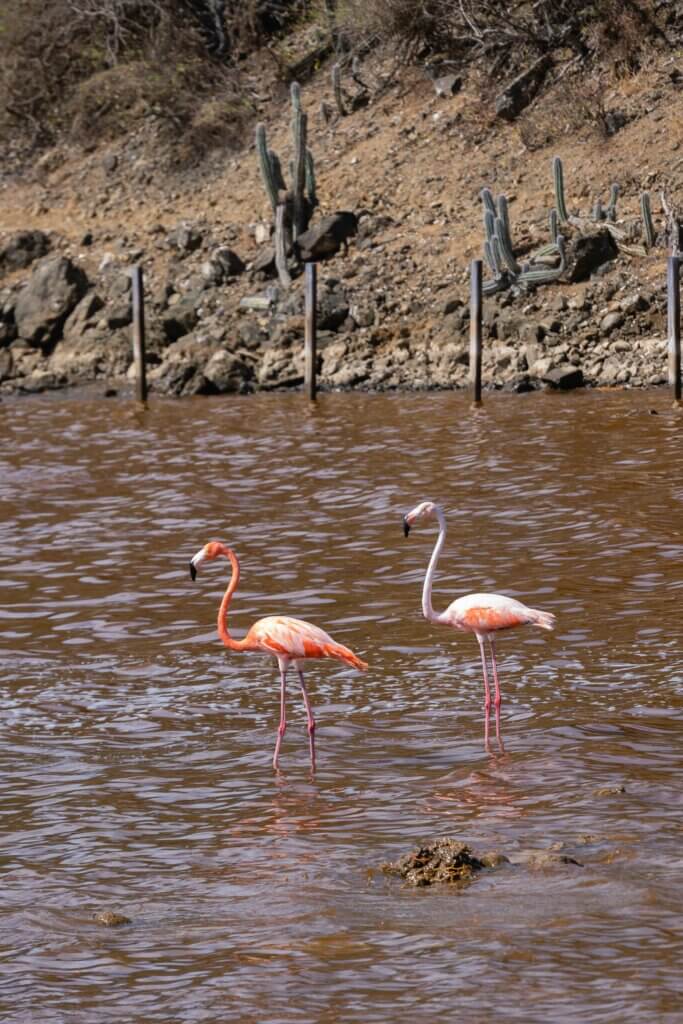
On the left hand side of Boka Bartol is Salina Bartol, a salt lake where you can spot flamingos. This is a great place to watch the birds. In addition to flamingos, other bird species that have been spotted here include American small egrets, Brown Pelicans, and Bigua Cormorants.
BOKA KATUNA
Another dive site in Washington Slagbaai National Park is Boka Katuna, but be warned, this is for advanced divers only!
If you have the experience to tackle this dive site, you will see coral formations scattered throughout the reef, and a sandy bottom where you can spot rays. The reef steadily drops to a depth of 25 meters.
Additionally, please note that this dive site is difficult to access, and it is tough to reach from the shore. In order to get here, you will have to climb down rocks. There is no buoy to anchor a boat, limiting your options for reaching Boka Katuna.
PLAYA BENGE
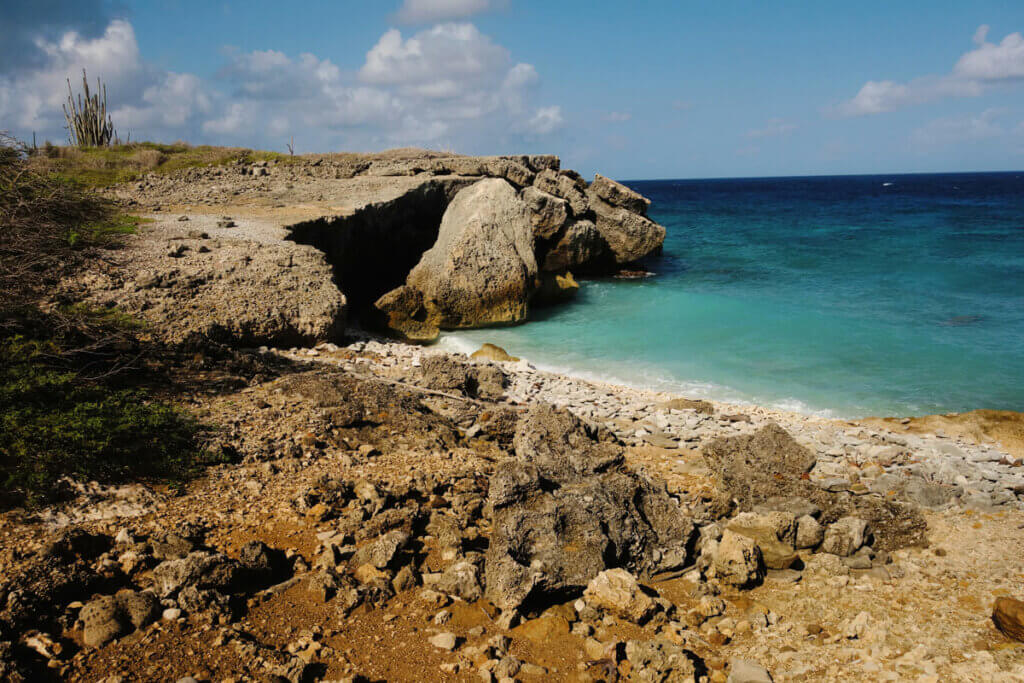
Keeping on the trend of dive sites, Playa Benge is another fantastic location for divers to enjoy. It’s situated on the northwest shore of Bonaire National Park, and it is for advanced divers only.
Playa Benge has really beautiful coral, and bigger species of fish populate this area. The depth is 15 to 100 feet.
Experienced divers, Playa Benge is one of the things to do in Washington Slagbaai National Park that you won’t want to miss.
Washington Slagbaai National Park Stops Where the Routes Merge Again:
PLAYA FUNCHI & SALINA FUNCHI
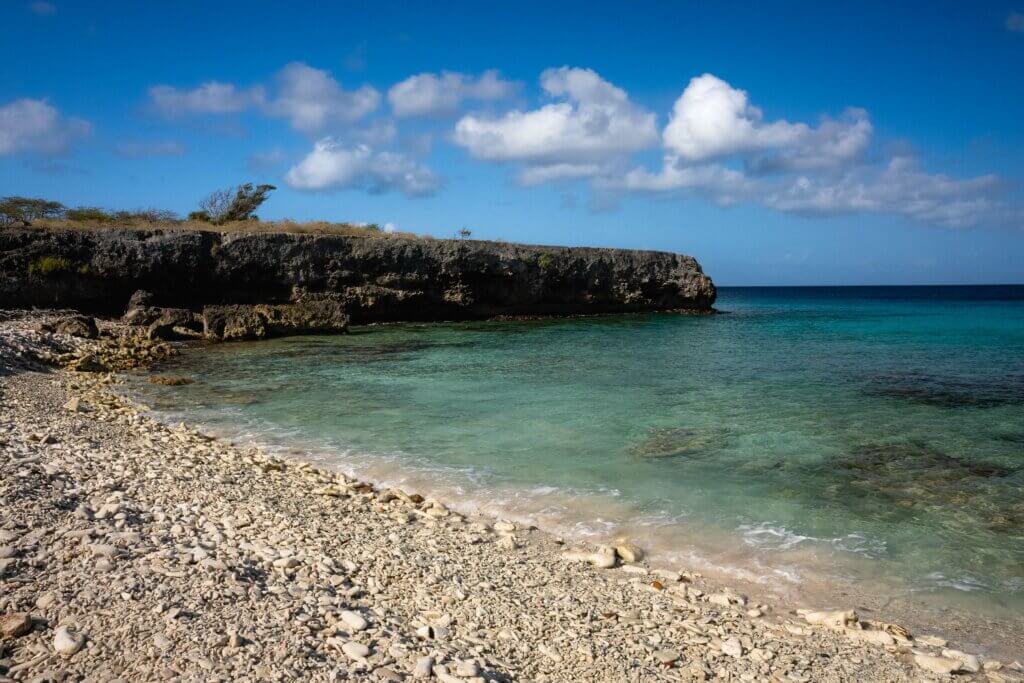
For a little beach time, and some time to watch the birds, head over to Playa Funchi and Salina Funchi.
Playa Funchi has an interesting backstory as to how it got its name. The name “Funchi” comes from a popular Bonaire side dish made from ground cornmeal, similar to Italian Polenta. The word “playa” means beach. Combine the words playa and funchi, and it basically translates to cornmeal beach. And that’s because the sand resembles cornmeal!
The beach here is a dive site, but it does have a semi-difficult entry due to the coral. If you’re not a diver but still want to enjoy the beach, this is a great place for a picnic. There are picnic tables here, as well as some palapas to plop down and get some shade.
Also, be on the lookout for iguanas, as they are known to roam this area.
On the other hand, Salina Funchi is a bird hangout, great for gazing at the flamingos. Spring and fall are when seasonal migrations happen, making it a perfect time to stop by Salina Funchi to see what’s happening.
BISE MORTO
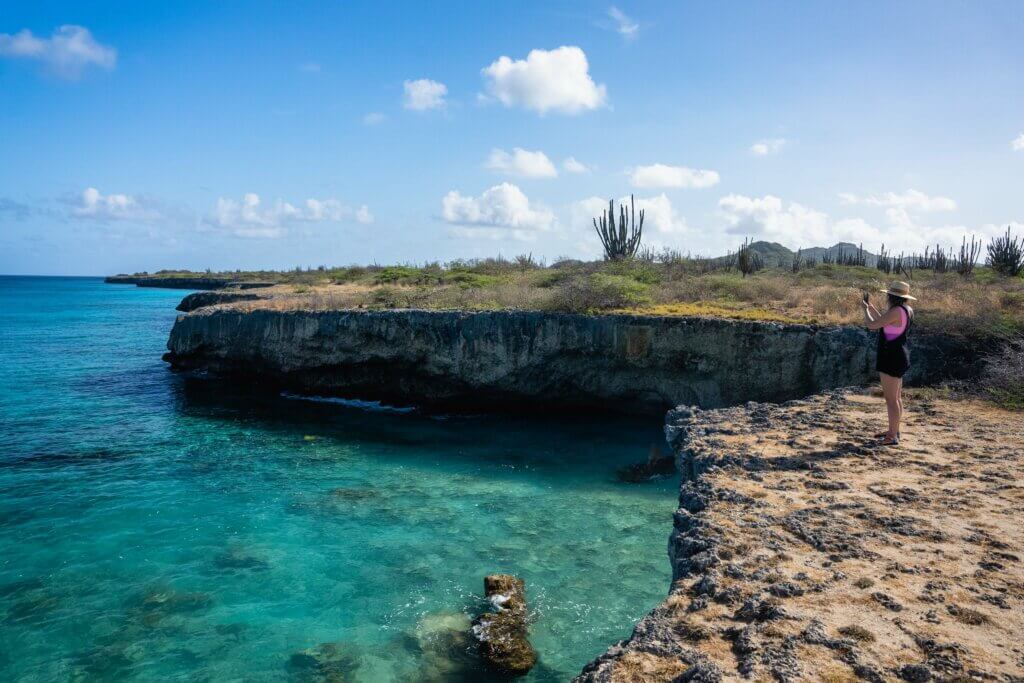
Adding to the list of dive sites is Bise Morto, which translates to “dead deer”. The name comes from the large swaths of staghorn corals here. However, there are also elkhorn, brain, and finger coral, as well as groupers and triggerfish.
It’s a beautiful spot to stop and take a photo of the blue water and cliffs below. Whale sharks, manta rays, and sprouting humpback whales have been spotted here. The depth is 20 to 100 feet.
There is a steep path to reach the water, and only experienced divers and snorkelers should venture out to Bise Morto. For divers, this spot is among the best stops in Washington Slagbaai National Park.
WAYAKA 1, 2, 3 & SALINA WAYAKA
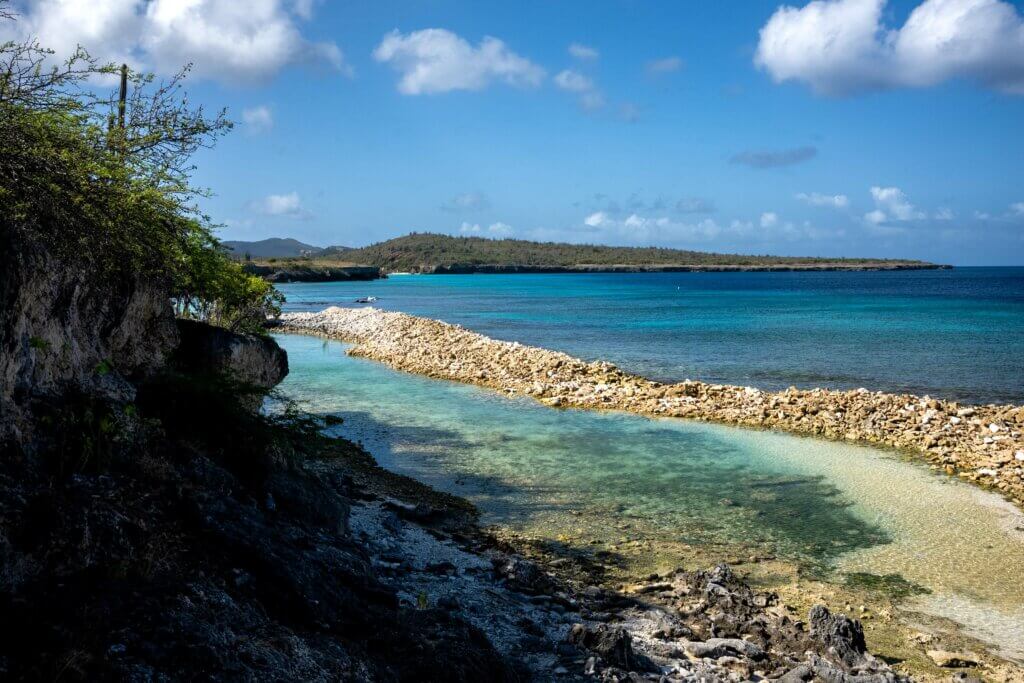
Among the most popular destinations at Washington Slagbaai National Park are Wayaka 1, 2, 3 and Salina Wayaka.
Snorkelers, this is the place for you! All three are dive and snorkel spots, and Wayaka 2 is a favorite snorkel spot.
At all three spots, you will see French Angelfish, midnight parrotfish, and reef channels. In addition, there is a sandy beach with a little cave that you can check out.
Wayaka 2 is the most popular out of the three beaches. It boasts light, crystal blue water where you can take a dip in the Caribbean Sea. It’s actually an ideal spot for swimming.
The sand on the beach is slightly pink, due to the coral. Fish and marine life are easy to spot while you’re in the water, which is about 10 to 15 feet deep. There are stairs that lead to the beach.
Head over to Salina Wayaka, and you will see flamingos in the salt pan part. For some fun in the sun and water, stopping by Wayaka should be on your itinerary of things to see and do in Washington Slagbaai National Park.
BOKA SLAGBAAI & SALINA SLAGBAAI
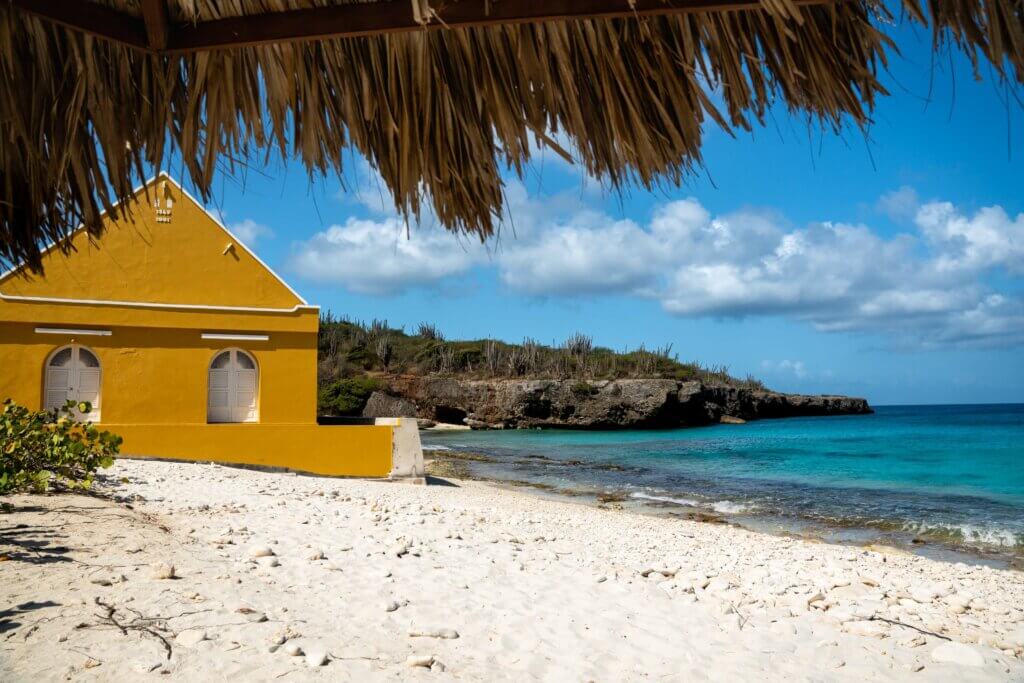
Another favorite destination in the park is Boka Slagbaai and Salina Slagbaai. At Boka Slagbaai, you can cliff jump, go snorkeling and swimming, and do some birdwatching.
The cliff looks out over the bay, so if you’re cliff jumping, you have a spectacular view. A treat for those who get out in the water is the underwater cannons. The sites for these can be difficult to find, and they are about 6 feet deep in the water.
And perhaps the best feature here are the bathrooms if you’ve been holding it all day! They are few and far between in the park, so when you find them, it’s a luxury.
Additionally, there are buildings here that have an interesting history. The word ‘slagbaai’ is derived from ‘slatchtbaai’, which means slaughter bay in Dutch.
Goats were slaughtered and salted here, and then shipped to Curacao. In different times, the bay used to be one of two main ports on Bonaire. Today, the port buildings are used as picnic areas that provide plenty of shade.
Additionally, you can arrange to spend the night here if you plan in advance and secure a reservation through STINAPA.
Turning to Salina Slagbaai, it was used as a salt pan back in the day. If you visit today, you will see many types of waterbirds. Depending on when you visit, you will see certain species of birds and you won’t see others. The types of birds that you may see include flamingos, herons, egrets, gulls, terns, shorebirds, and pelicans. We saw flamingos while we were here!
This is pretty much your last stop and Boka Slagbaai and Salina Slagbaai are adjacent from each other. Boka Slagbaai and Salina Slagbaai are high up on the list of things to see and do in Washington Slagbaai National Park.
Drive Out of Bonaire’s National Park
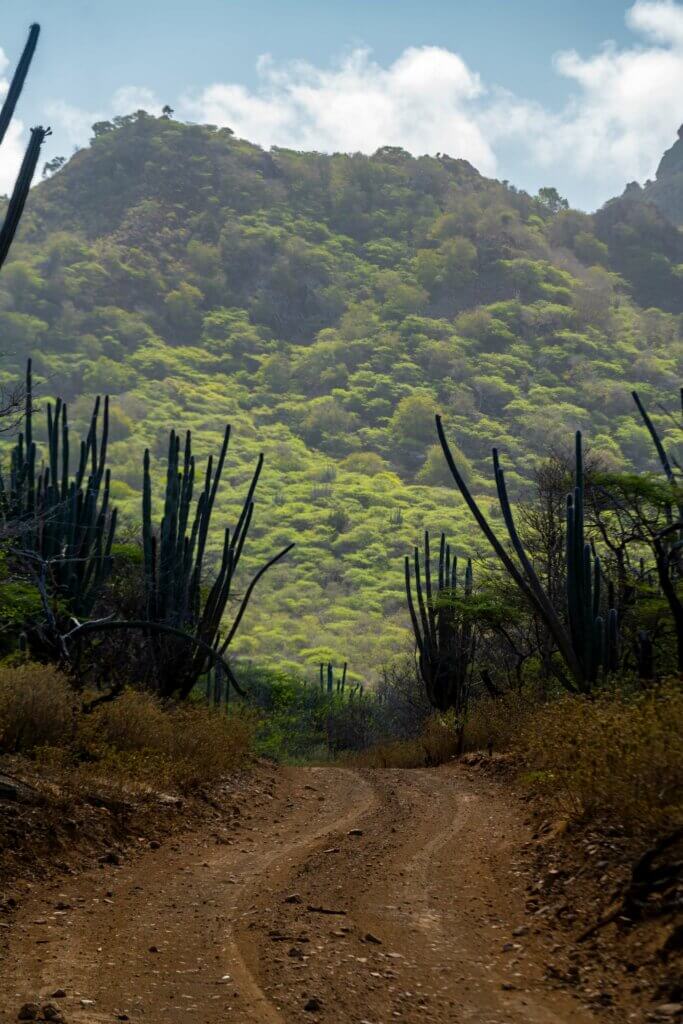
It’s about a 30-minute drive to the exit of the park from here on a dirt bumpy road. Make sure you are paying attention to the time in the afternoon and any signs indicating when you have to leave certain sites by so you are out of the park by its closing at 5 PM.
Once you make it to Juwa Pass you have another 15 or so minutes to go and you’re almost back to paved roads!
Things to See Near Washington Slagbaai National Park
So depending on how you planned your day and stops in Bonaire’s national park, you may have more time to explore things to do nearby or are looking for the nearest place to grab a bite to eat!
Here are a few things to do nearby Washington Slagbaai National Park outside of the park.
GOTO LAKE / GOTOMEER
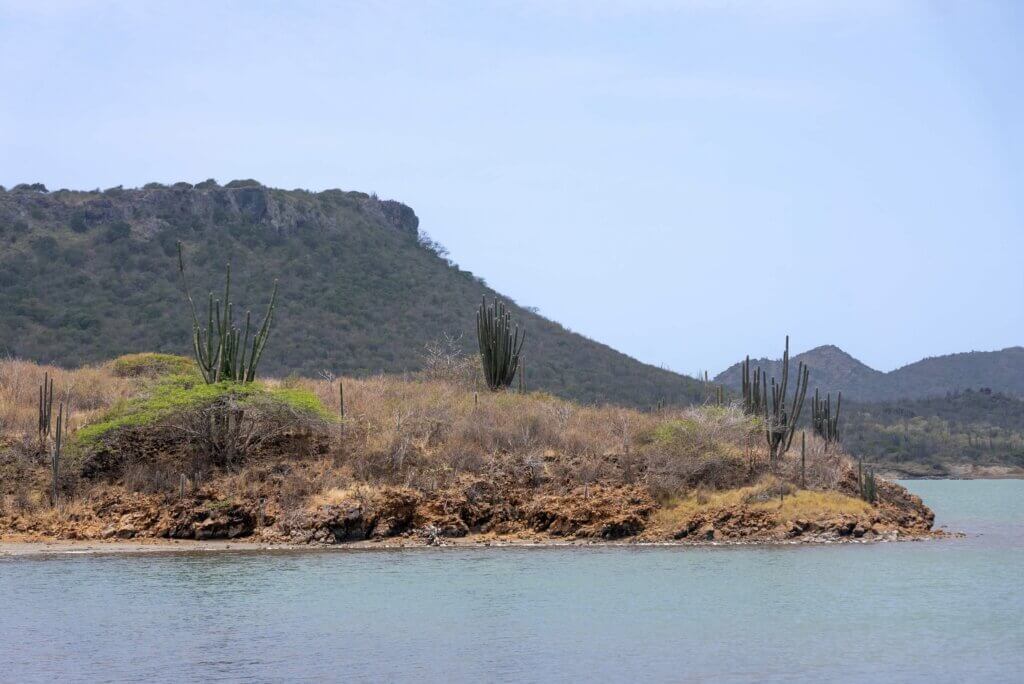
Along the boundaries of Bonaire’s national park is Goto Lake or Gotomeer. However, you can’t actually visit while you’re in the park, you have to plan a visit either before the park or after, it’s only a 15-minute drive and cuts through Rincon.
This site boasts the biggest saltwater lake in Bonaire, and it’s a hangout spot for Caribbean flamingos. The road is high above and along the lake, there’s even a pull-off spot at the higher area making it a perfect vantage point.
You can get 360-degree views of the lake and surrounding area, and it’s an excellent viewing spot to watch the flamingos. There is a road that takes you to the water and flamingo feeding area if you want to get just a tad closer to them.
A great time to visit is January through June, when the flamingos are taking care of the chicks. We were unlucky at this spot though as we visited twice during our time in Bonaire and didn’t get to see flamingos either time with the exception of a few stragglers so far off in the distance we felt like it barely counted!
If you haven’t had your fill yet of flamingo watching after a full day in the park, Goto Lake must be on your list of best stops in Washington Slagbaai National Park.
KARPATA
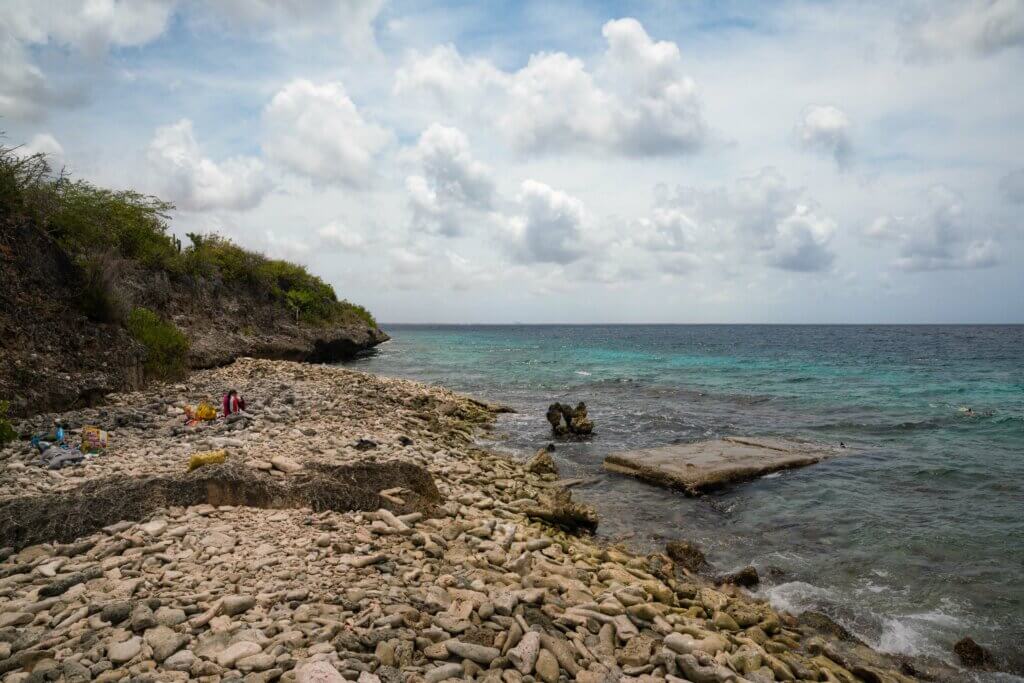
A favorite spot with shore divers and snorkelers is Karpata, known for its amazing coral reef. When you’re exploring the waters, you may stumble across massive ship anchors entwined in the coral or Elkhorn colonies. Cool! The depth here ranges from 20 to 100 feet. In addition, Karpata has terrific visibility and 360 degree scenic views.
Photographers, especially wide-angle photographers, this is your place. If you plan on snorkeling here, make sure to bring your own snorkel gear.
There’s really no beach here but there is an area you can leave your stuff while you’re in the water. The shore is rockier here and you’ll want to grab your snorkel gear and get to the concrete slab which provides incredibly easy entry into the water.
This was one of our favorite places for Bonaire snorkeling during our trip! And Karpata is located at a section of the Queen’s Highway that’s two-way (most of it from Kralendijik heading towards Washington Slagbaai National Park is one way heading in that direction). So you can access Karpata without having to drive all the way down to the beginning of the one-way road!
RINCON
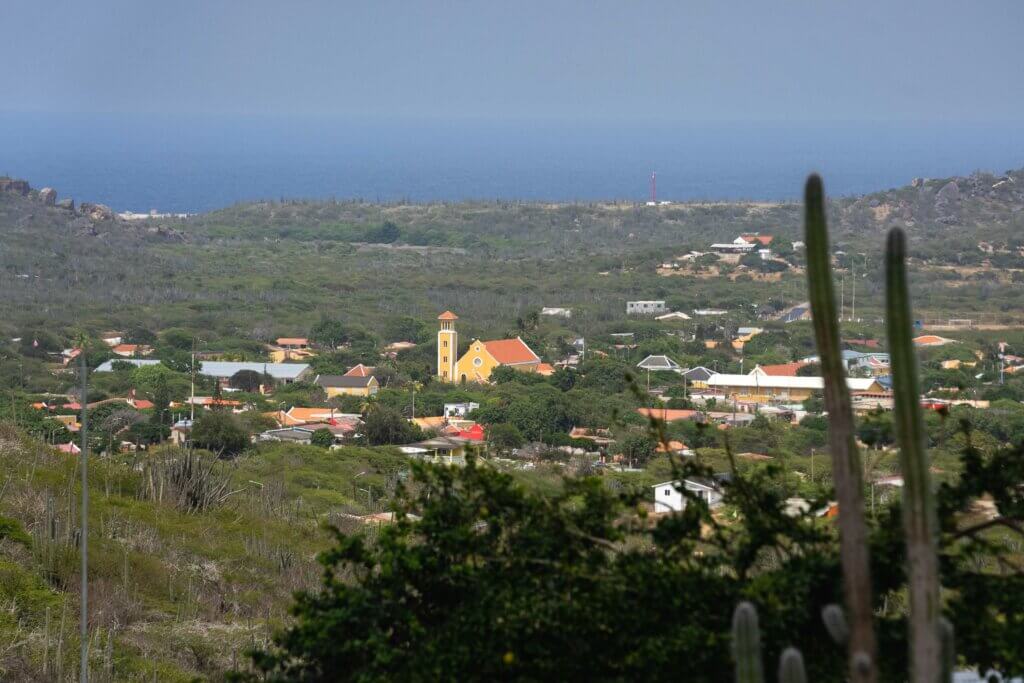
A must-stop near Washington Slagbaai National Park is Rincon, the oldest village on Bonaire. It’s nestled in a valley on the northwest part of the island, and it is the oldest village of the former Netherlands Antilles and Aruba.
Rincon dates back to the 16th century, when the Spaniards established the village. The original purpose of the Spaniards settling here was to keep out of sight of pirates.
You can drive through Rincon, and see a couple of churches, and a monument of statesman Julio Antonio Abraham in the center of the village.
Some of the old buildings here include the Cocari complex, which is comprised of three historic school buildings and a former convent. Restorations at the Cocari complex have been happening since 2012.
The authentic Kas Krioyo Rincon is the oldest house in the village, and you can even see the inside. And if that’s not enough, Magasina di Rei is the second oldest house in Rincon.
Stop by Cadushy Distillery, where they make a unique liqueur out of the cactus, but note that they close at 5 PM.
There are dining options here, but it’s limited, we had one of our favorite meals in Bonaire here at Kos Bon So, which seemed to be the only restaurant open during our time here.
What to Bring to Washington Slagbaai National Park
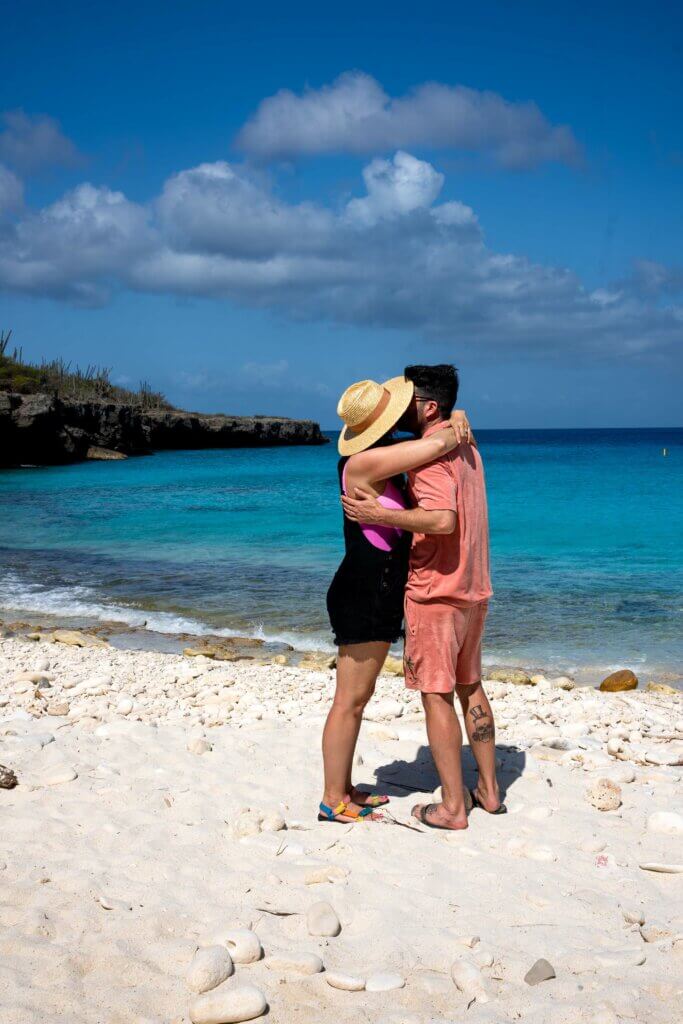
You’ll need sun protection when visiting Washington Slagbaai National Park! Bring a hat, plenty of reef-safe sunscreen, and sunglasses. Keep in mind you’ll be in alot of exposed areas, especially along the coastline. So you need to take extra measures to keep yourself safe from the sun and remember the sun is stronger in Bonaire, so please be prepared!
For reef-safe sunscreens check out these:
- Kokua Sunscreen – water-resistant zinc sunscreen that applies smoothly without white residue
- Sun Bum Mineral Sunscreen – the Mineral line (white bottle with brown text that says ‘mineral’) is a clear, fast-absorbing zinc-based sunscreen that’s great for sensitive skin and is sweat and water-resistant.
- Thinksport Mineral Sunscreen – We have been using this brand for years and love how easily it applies and is water resistant. They are also a bit more affordable.
- Supergoop! Unseen Sunscreen – this sunscreen is not only reef-safe but it’s also super hydrating, this one is a little pricier so we recommend using this on the face and neck area since it falls under more of a skincare product as well.
Bring plenty of drinking water. It’s recommended to have at least a gallon of water per person if you’re hiking/diving/snorkeling.
Bring your own food and snacks. If you’re spending all day you’ll want to pack your own food as there are no facilities or places to get food once you’re here. Consider your impact and take your trash outside of the park. Also, don’t leave your food around for iguanas and lizards an opportunity to steal!
You’ll want to bring your own snorkel and dive equipment! There are no rentals here, so if you’re planning on enjoying the underwater activities, come prepared and already have your diving equipment rented and sorted and we think its easiest for snorkelers to just buy a snorkel set for everyone in your family in advance.
We both bought this snorkel set which included a mask, snorkel, ear plugs, flippers, and carrying bags which were perfect for hopping around beaches and snorkeling in Bonaire! (we both pack carry-on only and were able to easily fit it in our bag too!)
It’s also necessary to have a pair of water shoes too to wear under your flippers! Out of all these snorkeling locations have rocky entrance points or pebbly beaches. These also fit in the snorkel set bag we bought!
Bring your own towel. We also pack our own beach towel on trips with us too, not the bulky traditional beach towel you’re thinking of though. We both always use a sarong or Turkish towel because they are lightweight, dry quickly, easy to pack, and do the job!
Don’t forget something to take underwater photos! For those who are looking for something on a budget, you can get a waterproof pouch for your smartphone to take underwater photos. Just be careful to keep this sealed correctly so no water gets in. This does do the trick but can be a bit tricky to play with to get focus.
Or bring a waterproof camera like the classic waterproof GoPro action camera or the waterproof Insta360 camera which are both great for snorkeling and don’t require the waterproof housing if you’re not diving into deeper water!
If you’re planning on hiking, especially the more difficult trails be prepared with proper hiking footwear.
Have enough fuel in your car before entering the park. As mentioned earlier, it’s recommended to have a ½ tank of fuel before entering Bonaire’s national park. It’s best to prepare the night before if you’re trying to get an early start as the nearest gas station is in Rincon and doesn’t open until 8 AM, we also had to pay for fuel with cash so be prepared.
You need a minimum of two hours for Washington Slagbaai National Park to enjoy the short loop with your car, which is about 1.5 hours to drive. If you want to do the long loop, which takes around 2.5 hours to drive, you’ll want to plan at least 3.5 hours or more depending on if you want to snorkel, dive, or hike.
You need a high-clearance vehicle with AWD or 4WD to access Washington National Park, they do not allow bikes or regular cars inside the park as it’s only dirt roads that are bumpy and can be muddy after rainfall. If it’s rained heavily recently, the park will close to let the roads dry out.
All hikers need to start the Mount Brandaris hike before noon to finish and drive out of the park by its closing time at 5 PM. It’s also best to do the Mount Brandaris hike, which is only accessible by the short loop in Washington Slagbaai National Park first thing in the morning to avoid the mid-day heat.
The entry to Washington Slagbaai National Park is $40 USD per person paid to STINAPA as a nature fee. If you already paid the nature fee for diving or BMNP access, be sure to present that when you enter the park as you will get a discounted rate. The nature fee is good for a calendar year.
The nature fee in Bonaire is a mandatory fee paid by visitors to support the conservation and maintenance of the island’s natural resources. It helps fund initiatives such as protecting marine parks, preserving wildlife habitats, and maintaining hiking trails, ensuring the sustainable management of Bonaire’s natural environment.
Enjoyed this guide to everything you need to know about visiting Washington Slagbaai National Park and the best stops in Washington Slagbaai National Park? Bookmark for later or share the love below on Pinterest.
